NEW GLOBAL PUSH TO TACKLE IUU FISHING
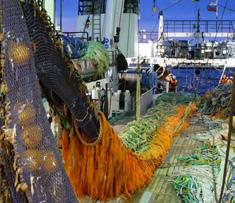

Parties to the Food and Agriculture Organization of the United Nations’ Agreement on Port State Measures (PSMA) have agreed to strengthen efforts to combat illegal, unreported and unregulated (IUU) fishing by extending vessel inspections, exchanging global information and improving the capacity of developing states.
The Fourth Meeting of the Parties, hosted by the Indonesian Government in Bali on 8-12 May 2023, endorsed a strategy to increase adherence to the PSMA. The parties also agreed to take the Global Information Exchange System (GIES), a digital system developed by FAO at the request of the parties, from its current pilot phase to a fullyoperational system by the end of this year.
“FAO is working with countries and regional fisheries management organisations to combat IUU fishing, by reviewing national legislation, identifying ways to strengthen their institutional capacity, and helping them enhance their monitoring and surveillance systems, so they can effectively implement the PSMA and other international instruments to promote sustainable fisheries,” FAO Fisheries and Aquaculture Director Manuel Barange said.
According to the FAO, the PSMA has the highest rate of adherence of all international fisheries

n The losses attributable to IUU fishing are estimated to be in the region €10 billion annually
instruments. It is the first binding international agreement designed to prevent, deter and eliminate IUU fishing by stopping foreign vessels engaging in it, from using ports, landing their catches, even denying them entry. It also seeks to block fish products derived from IUU fishing from entering international markets.
So far 75 parties, including the European Union as one party on behalf of its member states, have adhered to the PSMA. This represents 59% of port states globally.
FAROES GREEN LIGHTS INCREASED SALMON TAX
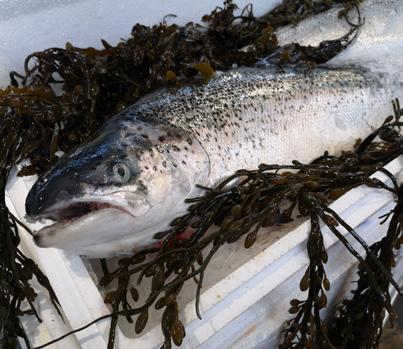
A new revenue tax for the Faroe Islands’ salmon farming industry proposed by the recentlyelected government has been passed by parliament.
Effective 1 August 2023, a total of nine different tax rates – ranging from 0.5% to 20% – can be applied, dependent on the difference between the monthly FishPool Index prices and the average production cost for the Faroese salmon industry. Average production costs will be assessed twice a year.
The new tax doubles the 10% limit proposed by the previous (now opposition) government. The 20% rate will apply when the FishPool Index prices exceed the industry production cost by DKK 40 per kg. 2021’s average production cost of DKK 39.15 per kg was proposed as the baseline.
Japan tackles illegal seafood issues page 12
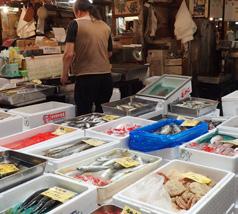
NEWBUILDS
Versatile Gollenes joins Norwegian fleet page 20
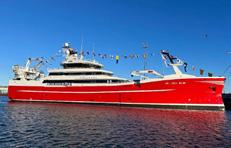
PROCESSING
Russia maintains bold expansion plans page 28
AQUACULTURE
Industry faces consumer challenge page 32
JUNE 2023 l VOL 72 ISSUE 6 worldfishing.net
Viewpoint 3 | New Horizons 14 | Analysis 16 | Fishing Technology 22
INSIGHT
Photo Credit: NOAA


VIEWPOINT
JASON HOLLAND | Editor | jholland@worldfishing.net
Feeding hungry mouths
If any incentive were needed, the declaration from FAO Director for Fisheries and Aquaculture Professor Manuel Barange at Seafood Expo Global 2023 that right now, 800 million people in the world are classed as undernourished is more than enough reason for the seafood world to reconsider what it can do more of and also do better to address what he called “one of the most tragic statistics” and “an insult to our intelligence”.
According to Barange, aquatic foods are critical to overcoming hunger and poverty because they’re not increasing in cost at the same rate as other foods and because they bring considerable diversity to the human diet, with capture fisheries comprising just under 3,000 species and aquaculture producing 650. Comparing that to land-based animal production shows the potential that exists in this food category. Furthermore, as the FAO man pointed out it’s not just about protein or the volume of food, it’s also improving the population’s nutritional condition, and this is also something that the likes of chicken and beef cannot match.
There is, of course, a “but”. It’s been identified there are regions where without fundamental change, fisheries and aquaculture production won’t be able to keep up with the population growth. FAO has modelled that through blue transformation, per capita seafood consumption can be increased from its current 20.2kg to 25.5kg by the middle of the century. However, it has also calculated that a failure to transform – not managing fisheries properly, not conducting aquaculture sustainably, not developing value chains etc. – will decrease the consumption level to under 19kg per person, thereby exerting more pressure on land-based food systems and triggering more ecological problems.
To tackle that 800 million mouths number, Barange insists complacency isn’t an option. Only by transformative change will seafood be able to provide the sustainable and productive returns needed by people and the planet, he said.
The international fishing & aquaculture industry magazine
EDITORIAL & CONTENT
Editor: Jason Holland jholland@worldfishing.net
News Reporter: Rebecca Strong rstrong@mercatormedia.com
Regular Correspondents: Please contact our Correspondents at editor@worldfishing.net
Tim Oliver, Bonnie Waycott, Vladislav Vorotnikov Quentin Bates, Terje Engø Eduardo Campos Lima, Eugene Gerden
Production
David Blake, Paul Dunnington production@mercatormedia.com
SALES & MARKETING t +44 1329 825335 f +44 1329 550192
Media Sales Manager: Hannah Bolland hbolland@worldfishing.net


Marketing marketing@mercatormedia.com
EXECUTIVE Events Director:
Marianne Rasmussen-Coulling
Chief Executive: Andrew Webster awebster@mercatormedia.com

WF magazine is published monthly by Mercator Media Limited, Spinnaker House, Waterside Gardens, Fareham, Hampshire PO16 8SD UK t +44 1329 825335 f +44 1329 550192 info@mercatormedia.com www.mercatormedia.com
Subscriptions
Subscriptions@mercatormedia.com Register and subscribe at www.worldfishing.net
1 year’s digital subscription with online access £204.50 For Memberships and Corporate/multi-user subscriptions: corporatesubs@mercatormedia.com
About World Fishing & Aquaculture
Launched in 1952, World Fishing & Aquaculture is published by Mercator Media, a B2B media and events company specialising in international maritime industries, including marine business and technology, ports and terminals, and environmental strategies.
Through its monthly publication and free access website (www. worldfishing.net), World Fishing & Aquaculture provides expert-written, in-depth coverage of the fisheries, aquaculture and processing sectors, with a strong focus on the emerging solutions, technologies and innovations that are shaping the broader seafood economy’s landscape.
©Mercator Media Limited 2023. ISSN 2044-1908 (online). World Fishing is a trade mark of Mercator Media Ltd. All
For the latest news and analysis go to www.worldfishing.net JUNE 2023 | 3
part
be reproduced
in
office: Mercator
Limited,
House, Waterside
Hampshire
UK.
rights reserved. No
of this magazine can
without the written consent of Mercator Media Ltd. Registered
England Company Number 2427909. Registered
Media
Spinnaker
Gardens, Fareham,
PO16 8SD
It’s not just about protein or the volume of food, it’s also improving the population’s nutritional condition
‘‘
BRIEFS REPORT: $55 BILLION NEEDED TO AVOID SEAFOOD SHORTAGE
Zimbabwe moots fisheries bill
Consultations have begun on a new fisheries and aquaculture bill for Zimbabwe. The legislation would be the first of its kind and aligns with government aims to improve the ease of doing business in the country. The bill is expected to be considered for debate in parliament and passing into law by the end of 2023.
SAIC funds landmark project
The UK-headquartered Sustainable Aquaculture Innovation Centre (SAIC) has announced plans to support a further six innovation projects valued at £2.5 million, bringing the total number it has funded to 100.
ASC upgrades chain of custody
Farmed seafood certification scheme, the Aquaculture Stewardship Council has confirmed its new Chain of Custody (CoC) module will be effective and mandatory from 30 May 2023. The update includes new requirements that further strengthen the value and assurance of the label.
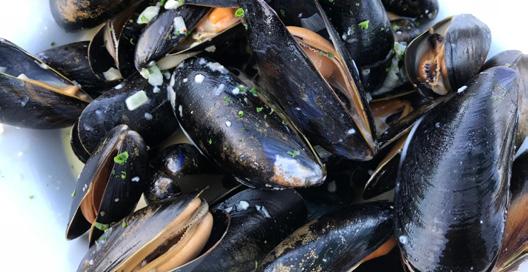
New fishing authorisations website
A website allowing users to search for data on fishing authorisations that have been granted during the last 10 years for EU vessels fishing outside EU waters and for non-EU vessels fishing in EU waters has been launched by the European Commission.
This is the sum that must be invested in regenerative aquaculture and technological progress by 2050 if a 20% shortfall between the global seafood demand and supply is to be avoided, according to a new report from financial think tank Planet Tracker.
The report “Avoiding Aquafailure: Aquaculture diversification and regeneration are needed to feed the world” states that even in the most optimistic scenario of improving current aquaculture practices, a supply gap would still exist and that change is critical.
By 2050, the global demand for seafood is expected to reach 267 million tonnes, but production levels are forecast to reach only 217 million tonnes, resulting in a supply gap of 50 million tonnes, the non-profit said. It added that this gap is expected to worsen due to the loss of biodiversity from overconcentrated fishing as the top 10 seafood-producing countries generate 89% of the world’s seafood, while also directing over 75% of fishing activity towards only three species.
Determining that technological solutions such as farming seafood offshore,
on land or growing fish in labs could contribute up to 5 million additional tonnes of seafood by 2050, Planet Tracker said that also implementing a diversified seafood production model through the increased use of cultivated seafood, the introduction of bivalves such as mussels and oysters as well as seaweed, and the transition to a regenerative aquaculture system, global seafood production could be increased by 45 million tonnes.
“On land, the conversion of natural habitat into monoculture is widely recognised as a key driver of biodiversity loss, but less acknowledged are the similar patterns affecting marine life due to monoculture fish
n
farming. Unsustainable seafood production will not feed the world by 2050, but the good news is that an aquaculture industry that is resilient, productive and environmentally sustainable can be built,” Planet Tracker’s Head of Oceans Programme François Mosnier said.
“Planet Tracker found it will take at least USD 55 billion in capital expenditure to finance this transition, which most aquaculture companies cannot afford. That’s why we’re calling on investors and lenders to assist with diversifying the aquaculture industry and closing the supply gap.”
FOREIGN FISHERS ‘PAYING PRICE’ OF RUSHED VISA CHANGE
Migrant fishers will be “forced to pay the price” for the UK government’s failure to properly implement visa rule changes, the International Transport Workers’ Federation (ITF) has warned.
Recent changes to tighten up regulations around recruiting foreign workers have closed an exploitative loophole around the use of the Seafarers’ Transit Visa but ITF warns that poor planning and a lack of notice means a good change could be bad news for workers.
Previously, UK fishing boatowners had been using the Transit Visa, which is intended for seafarers joining
international ships departing UK waters within 48 hours, as a way to avoid paying workers, arguing that they weren’t working in the UK. This has now been outlawed and workers must now apply for a Skilled Worker Visa instead.
ITF welcomes this change but is concerned the law has been implemented before an alternative system is in place, meaning workers will face sudden deportation.
“Right now, there are as many as 2,000 non-EEA fishers in the UK, employed by UK companies on UK-flagged vessels, but entering the UK via the transit visa,” said ITF’s
fisheries expert and campaign lead for the UK, Chris Williams.
“Many will be forced to leave the UK and may be unable to return due to the English language test requirements for the correct work permit. These are people who signed contracts and came here in good faith, worked hard for the industry, only to wake up one day to find their immigration status illegal, when it wasn’t clear the day before or when they were employed.”
Williams said it wasn’t too late for UK government to protect workers during the transition to the new visa system.
4 | JUNE 2023 For the latest news and analysis go to www.worldfishing.net NEWS
Transitioning to regenerative aquaculture could boost global seafood production by 45 million tonnes, says Planet Tracker
Specialized in development and manufacturing of man overboard recovery systems. Most known for the Markusnet type MS and the variety of Markus Scramble-nets type SCN, Markus Emergency ladders type MEL2/SCN2 and Throw-line type RLC.


www.Markusnet.com
Markusnet
For commercial and leisure. Lloyd´s Register EMEA type certified for ISO19898/2019
Light, quick fastening, takes little space, provides easy and fast method to place the casualty in the net, is soft but firm around the casualty, provides easy lift by one or two persons and is easy to repack after use
Emergency ladder

For upto 1,8 metre freeboard. Provides safe passage back on board at the side of the boat, can be pulled down from the water and it is made to go 1 metre into the water in lowered position.
Throw line

For all types of ships and boats. Ideal to carry on hikes near water.

 Markus Lifenet ehf
MOB Boat Rescue-net
Markus Lifenet ehf., Hvaleyrarbraut 27, 220 Hafnarfirði Tel:
Markus Lifenet ehf
MOB Boat Rescue-net
Markus Lifenet ehf., Hvaleyrarbraut 27, 220 Hafnarfirði Tel:
5651375-
sales@markusnet.com - www.markusnet.com
BRIEFS IOTC ‘MISSES CHANCE’ TO PROTECT YELLOWFIN TUNA

Germany donates to developing nations
Germany has contributed €500,000 to a new World Trade Organization fund to help developing nations implement fisheries subsidy agreements. The funds are the first in a multi-year donation totalling €2 million.
MarinTrust upgrading factory standard
Marine ingredient production programme MarinTrust has kicked off an open public consultation on the revision of its Factory Standard. Feedback will be taken into account before the launch of Version 3 of the factory Standard, due to take place in October 2023.
WAFIC appoints new chair
The Western Australian Fishing Industry Council (WAFIC) has appointed a new chair. Hon Adele Farina LLB MAICD will take the helm following the retirement of Murray Criddle who had been in post for three years.
US shrimp enters RFM assessment
The Audubon Nature Institute’s Gulf United for Lasting Fisheries (GULF) Responsible Fisheries Management (RFM) certification programme is to transition to the Certified Seafood Collaborative’s (CSC) RFM certification programme, beginning with an assessment for white, brown and pink shrimp in all five Gulf states and federal waters.
The 27th session of the Indian Ocean Tuna Commission (IOTC) concluded without measures in place to safeguard stocks of the region’s yellowfin tuna.
The International Pole and Line Foundation (IPNLF), ocean charity Blue Marine Foundation and the International Seafood Sustainability Foundation (ISSF) have expressed concerns that an opportunity to protect stocks and better manage fish aggregating devices (FAD) has been missed.
Yellowfin tuna has been overfished since 2015 with the ISSF estimating that a reduction of 22% from 2020 levels is needed to rebuild stocks, a figure that the INPLF puts higher still at 30%. “We are dismayed that IOTC once again did not adopt critically needed improvements to measures for yellowfin tuna which is overfished and subject to overfishing,” said ISSF.
“IOTC cannot continue this stasis. It must develop effective and science-based management measures for
these Indian Ocean tuna stocks,” it added.
The use of drifting FADs has come under fire from IPNLF and Blue Marine Foundation who argue that the devices damage tuna stocks and entangle other marine species. IPNLF has hit out in particular at the EU which it says has “scuppered any chance of improved management”. Blue Marine also challenged the EU’s position, submitting evidence in support of legal action launched by French NGO, BLOOM, against the EC for its alleged objection
WWF: ILLICIT
to an IOTC resolution on the management of drifting FADs. IPNLF Managing Director Martin Purves said, “Claims of commercial confidentiality cannot continue to override the national jurisdiction of coastal states and their justified concerns about the damage caused by dFADs to tuna stocks, as well as their ghost fishing and polluting impacts on dependent marine ecosystems.
FISHING COSTING
INDIAN OCEAN MILLIONS
The southwest Indian Ocean is missing out on much as US$142.8 million in income due to the illegal, unreported and unregulated (IUU) fishing of shrimp and tuna, according to a new WWF report.
Examining the economic losses to Kenya, Madagascar, Mozambique, South Africa and Tanzania, the report: “The missing millions from shrimp and tuna fisheries in the Southwest Indian Ocean” determines that between 2016 and 2021, around 36% of all fishing effort was potentially IUU fishing.
WWF highlighted the Indian Ocean is the world’s second largest tuna production area behind the Western Pacific, while globally, shrimp made up 16.4% of total seafood exports in 2020, followed by
tuna, with the majority of these products entering high-income markets in North America, Europe and Japan.
While most of the demand for shrimp is met by farmed products, wild-capture shrimp, such as those in the southwest Indian Ocean, can come at a premium, it said.
WWF described the Indian Ocean’s overfishing of tuna as “a persistent problem”, with 37% of yellowfin catches being juveniles and 53.7% being below the optimum length between 2015 and 2019.
Two types of fleets principally operate in this ocean: industrial distant water fishing nations (DWFNs) that fish outside of their own territories and coastal small-scale fleets. WWF said ineffective fisheries monitoring
leaves DWFNs open to engaging in IUU fishing on scales that wipe out local resources and add pressure on already overfished stocks, in turn creating a level of demand that is filled to some extent by IUU fishing.
It has calculated that 48.7% of all tuna fishing effort in the region between 2015 and 2021 was potentially illegal or unregulated activity, and that on average, the potential economic losses to the region from IUU tuna fishing amounted to roughly $95.8 million each year.
Meanwhile, IUU fishing for species amounted to roughly $47 million each year between 2015 and 2021. Some 26.4% of all shrimp fishing activities were potentially illegal and unregulated, WWF said.
6 | JUNE 2023 For the latest news and analysis go to www.worldfishing.net NEWS
n The Indian Ocean yellowfin tuna catch has increased by 26-30% since 2014/15, says ISSF
Supplying the fish and seafood industry for decades


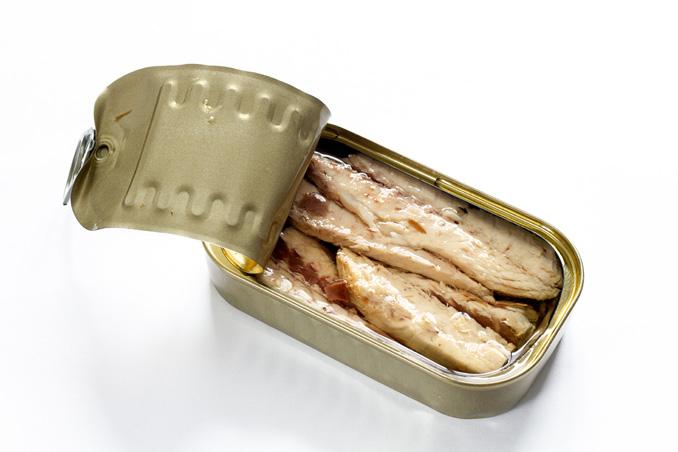
Cabinplant’s solutions for the fish and seafood industry include solutions for reception of raw material, sorting, grading, cleaning, filleting, cooking, cooling, weighing and packing.



Our solutions meet the strict hygiene standards and help customers make the most of any residual product to optimise production economy. Please visit www.cabinplant.com and learn more about our latest innovative solutions..
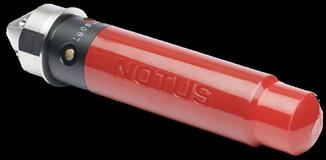

“
“
Yesterday we just concentrated on the data from Echo and we had the same amount of prawn for half the fishing time as the day before. Them numbers work.
Captain Patrick Flannery, F/V Cu Na Mara, Ireland www.notus.ca
BRIEFS
Thai Union names sustainability chief
Chris Shearlock has joined seafood company Thai Union as its new Sustainability Director for Europe. Shearlock follows Tracy Murai in the role, following her promotion to Assistant Director, Global Fisheries – Sustainability.
Blue whiting boost for Iceland
The volume of fish and shellfish landed by Iceland’s fishing fleet increased by 11% in April 2023 to a total 126,253 tonnes, according to preliminary figures for the month gathered by the country’s Directorate of Fisheries. The increase was mainly attributed to a large blue whiting catch of 88,308 tonnes, versus 65,191 tonnes in April 2022.

Japan imports more Russian seafood
Japan imported a record JPY 155.2 billion worth of marine products from Russia in 2022, according to data from the country’s Finance Ministry. While Japan imposed some economic sanctions on Russia following its invasion of Ukraine, marine products were exempt as Tokyo deemed the adverse effect on domestic businesses would be too great.
Development starts on new fly meals
BioMar and Agronutris have announced they are partnering to develop the next generation of black soldier fly meals specifically designed for the needs of the aquaculture industry.
IMPROVEMENTS SEEN IN US FISH STOCK HEALTH
There was a slight upturn in the status of commercial fisheries in the United States, according to the new 2022 Status of Stocks report from the National Oceanic and Atmospheric Administration (NOAA).
Of the 490 fish stocks managed by NOAA Fisheries, 93% are not subject to overfishing and 81% are not overfished. These numbers show slight improvements compared to the 2021 figures of 92% and 80%, respectively. Other positive trends seen included the number of stocks on the overfishing list decreasing by two to 24, and the number of overfished stocks decreasing by three to 48.
NOAA Fisheries also implemented new islandbased fishery management plans for Puerto Rico, St Thomas and St John, and St Croix this year, consolidating existing Caribbean fishery management plans and bringing 32 new stocks under NOAA’s management authority. These new plans account for differences between fishing sectors, available markets for harvested products, fishermen and their fishing communities, and the social and cultural
attributes unique to each island area.
“This annual report reveals the US. remains a global leader in maintaining the sustainable fisheries that drive the blue economy, support coastal communities and play a key role in marine ecosystems,” NOAA Administrator Rick Spinrad said. “NOAA and our partners continue to build on the country’s successful fisheries management approach by advancing policies and plans that help address changing conditions.”
The data also confirms that US commercial and recreational fishing supports 1.7 million full- and part-time jobs across the broader economy, generated over US$253 billion in sales impacts and contributed $79.4 billion to the gross
domestic product.
“Managing fisheries sustainably is an adaptive process, relying on sound science and innovation to conserve species and habitat, and meet the challenge of increasing our nation’s seafood supply in the face of climate change,” NOAA Fisheries Assistant Administrator Janet Coit said. “NOAA Fisheries conducted 198 stock assessments in fiscal year 2022, and our work in partnership with the Regional Fishery Management Councils under the MagnusonStevens Fishery Conservation and Management Act continues to be key to rebuilding and maintaining sustainable fish stocks.”
TUVALU SECURES EXTRA SUPPORT IN FIGHT AGAINST IUU
Ocean conservationist Sea Shepherd Global is sending a patrol ship to the South Pacific island of Tuvalu to help combat illegal, unreported and unregulated (IUU) fishing.
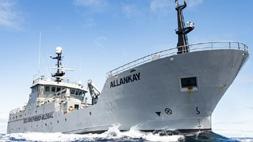
The 54.6-metre Allankay will carry members of the Tuvalu police service who will have the authority to inspect and detain fishing vessels engaged in criminal activity in Tuvalu’s sovereign waters.
“Sea Shepherd Global is excited to bring a model that we know works to the South Pacific for the first time,” said Alex Cornelissen, Sea Shepherd Global’s chief executive. “We know the impact of these
patrols. In the places where we work, illegal fishing has been largely eliminated.”
Illegal fishing poses a particular threat to Tuvalu as more than half of the country’s economy depends on fisheries. In recent years, satellite imagery has shown the presence of ‘dark vessels’ operating in the waters of Tuvalu. A dark vessel is one that is not transmitting its position through a mandatory location transponder, likely in an attempt to elude authorities and fish illegally.
“Use of Allankay will allow the government of Tuvalu to make such intelligence
actionable, as the ship has the range and endurance to allow for law enforcement agents stationed on board to control the entirety of Tuvalu’s maritime space,” explained Peter Hammarstedt, Sea Shepherd Global’s director of campaigns.
Allankay is being provided at no cost to the government of Tuvalu.
8 | JUNE 2023 For the latest news and analysis go to www.worldfishing.net NEWS
n US commercial and recreational fishing supports 1.7 million jobs
Photo Credit: NOAA
FISHERIES ACTION = CLIMATE ACTION, IRISH MINISTERS TOLD
Ireland’s government has been urged to implement crossdepartmental action that enables the fishing industry to transition to low impact, low emissions fisheries that in turn deliver on commitments to halt biodiversity loss and take action on the climate crisis.
NGOs Birdwatch Ireland and the Our Fish campaign have called on Minister for Agriculture, Food and the Marine, Charlie McConalogue, Minister for the Environment, Climate and Communications, Eamon Ryan, and Minister for Housing, Local Government and Heritage, Darragh O’Brien, to recognise the critical role that fish play in capturing carbon from the atmosphere as part of the ocean carbon pump.
They want fisheries management to be seen as carbon management by incorporating it into Ireland’s climate action plans.
“If Ireland is to meaningfully deliver on its climate and biodiversity obligations and secure the long-term viability of the fishing industry, the government must grasp that good fisheries management is good carbon management, and take commensurate, widespread action to minimise destructive bottom trawling, eliminate fossil fuel subsidies, and prioritise low impact fishing practices,” Birdwatch Ireland’s Marine Policy & Advocacy Officer Sinéad Loughran said.
The NGOs say the EU has the legislative power to facilitate
a transition to low impact and low emission fishing in Article 17 of the Common Fisheries Policy (CFP), which outlines the requirement to allocate quotas based on transparent, objective environmental, social and economic criteria.
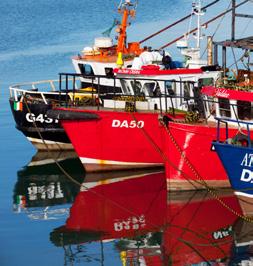

“Put simply, the current EU system of subsidising high impact, fossil fuel intensive fishing activities is akin to cutting off your nose to spite your face – it puts short-term operational costs ahead of environmental sustainability, climate resilience, jobs and economic profitability,” Our Fish Programme Director Rebecca Hubbard said. “As an influential player in EU fisheries, Ireland should instead be prioritising access to fishing opportunities
n
For the latest news and analysis go to www.worldfishing.net JUNE 2023 | 9 NEWS
Birdwatch Ireland and the Our Fish campaign want fisheries management to be incorporated into Ireland’s climate action plans for low-impact and lowemissions fishing fleets in order to accelerate the transition to fisheries management that delivers climate, biodiversity and social benefits.”
Photo Credit: BIM
US ghost gear programme
NOAA has awarded $8 million in funding to a new programme to remove ghost gear from US coastal waters. The Trap Removal, Assessment & Protection (TRAP) programme will initially focus on removing derelict crab and lobster posts from the waters around Virginia.
ASC, SFP sign aquaculture MOU
The Aquaculture Stewardship Council and Sustainable Fisheries Partnership have signed a memorandum of understanding formalising a common goal of increasing the sustainability of aquaculture production and practices around the world.
More support for China crab
NFI Red Crab Council and its sustainability partner Ocean Outcomes have entered year-five of the comprehensive red crab fisheries improvement project (FIP) in China, the Washington-headquartered National Fisheries Institute (NFI) has confirmed.
Thai Union pledges protection
The seafood company has become the inaugural company to sign the Sustainable Fisheries Partnership’s Protecting Ocean Wildlife pledge, with new commitments including identifying those fisheries of highest risk of endangered, threatened and protected (ETP) species by-catch and reducing those risks.
NEW FISHERIES FUND SEEKS TO FAST-TRACK $100M
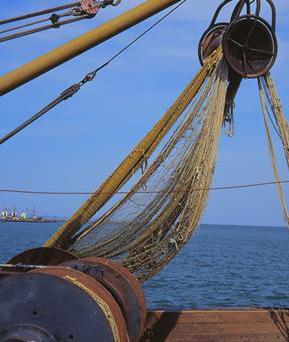
A fund launched at the Seafood Expo Global (SEG) 2023 in Barcelona is looking to help finance the move towards more sustainable fisheries worldwide.
The Fisheries Improvement Fund (FIF) is being established by fund manager Finance Earth and aims to raise more than US$100 million by 2030.
“This approach has the capacity to attract a range of investors from the public and private sector to support fishery improvement worldwide,” said James Mansfield, co-founder and managing director at Finance Earth. “This is a unique opportunity for all of us to protect our oceans and invest in a sustainable blue economy,” he added.
Finance Earth worked with World Wildlife Fund (WWF) to design an effective and scalable model. “Our vision is that this fund revolutionises fisheries finances, driving game-changing environmental and social impact,” said Johan Bergenas, senior vice president of oceans at WWF US.
Industry is also onboard with feed companies Cargill and Skretting and a number of
seafood buyers agreeing to join a pilot project to showcase the new fund. Mars, Incorporated, Costco Wholesale, Sodexo and the Walmart Foundation are also supporting its launch.
“At Mars, we are continually working to drive positive change for people, pets, and our planet. As part of this, we are always looking for more sustainable ways to source our raw materials to help protect vulnerable ecosystems and drive responsible practices,” said Paul Gardner, Chief Procurement Officer – Pet Nutrition at Mars.
“Through this innovative blue finance mechanism, Mars is supporting the development of new models that can provide a consistent source of funding for global fisheries improvements, with a clear aim to positively impact our oceans.
“Mars has committed $1million in funding for fishery improvement projects over five years, supporting the scaling up of credible projects beyond the pilot to create real change on the water. We believe this effort is critical to helping protect the long-term viability of our planet’s natural resources and
the many people dependent on healthy fisheries for their livelihoods,” Gardner said.
The companies will commit to a volume-based fee that enables the FIF to pay back upfront costs for fishery improvement programmes as well as create long-term revenue. This innovative approach embeds the cost of sustainability into the cost of the end product.
Finance Earth is now seeking proposals from industry players, NGOs, buyers/retailers and governments.
FULL TRANSPARENCY URGED FOR EU SEAFOOD
Ocean conservation advocacy organisation Oceana has called on the European Union to require full transparency for all seafood sold on the market, including processed and imported products. It wants consumers to be able to know what species of fish they are buying, if they come from overfished stocks, and where, how, and when they were caught.
To provide more information to those that eat, buy and sell seafood, Oceana is urging the EU to include sustainability information on all seafood products. To this end, it has started a Follow the Fish movement.
“EU citizens have the right to
know more about the fish they eat, particularly when it comes to environmental sustainability and fair labour conditions. Currently, it is very difficult for consumers to know what they are getting when they go to buy their seafood. Making this information available is the best way to avoid unsustainably fished products ending up on our plates,” said Vanya Vulperhorst, Campaign Director for Illegal Fishing and Transparency at Oceana in Europe.
Oceana is proposing the EU develops a mandatory sustainability ranking for all seafood products.
“The creation of an EU ranking system for seafood would be a revolutionary
opportunity to improve the information for those who buy and sell seafood, and those who eat it. To be effective, it’s critical that this information system be mandatory, and apply to all EU seafood products, no matter whether they’re fresh or processed, EU-caught or imported,” Vulperhorst said.
The European Commission is currently working on a proposal for a legislative Framework for Sustainable Food Systems and is considering how best to provide EU consumers with information on environmental and social sustainability on all food items, including seafood.
10 | JUNE 2023 For the latest news and analysis go to www.worldfishing.net NEWS
BRIEFS
n The new approach to funding fisheries improvements is looking to put sustainability at its core
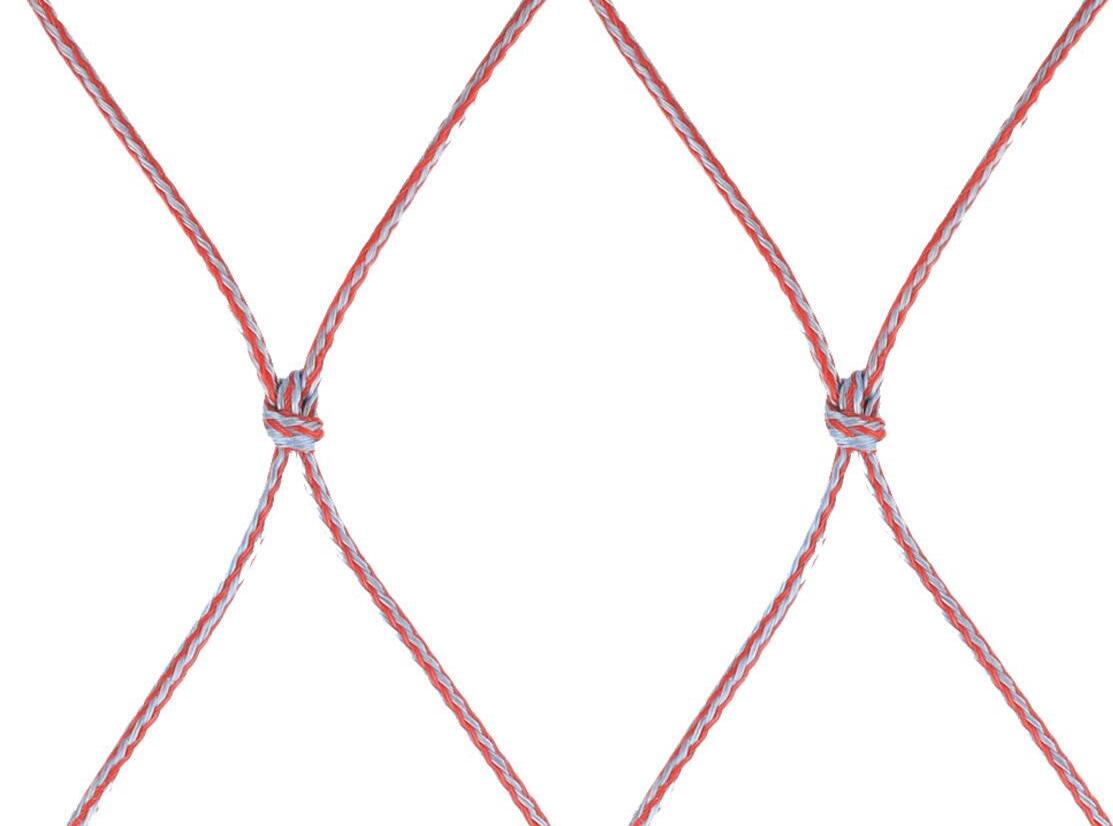
RUBY TRAWL NETS Thinner & Lighter with least shrinkage MAKE A BOLD MOVE WITH RUBY Enhancing fuel efficiency across the globe Telephone: +91-20-27990332 | Mobile: +91 7767802806 Email: vkumar@gar warefibres.com | Website: www.gar warefibres.com GARWARE TECHNICAL FIBRES LTD.
INSIGHT
The future of fishing
JAPAN’S LATEST STEP AGAINST ILLEGAL SEAFOOD

Efforts to recognise and combat IUU fishing look set to advance through a new law, writes Bonnie
Waycott
Japan is the world’s third largest seafood importer after the US and the EU, and home to the world’s largest seafood market, Toyosu, in Tokyo. For centuries, seafood has been intricately linked to the country’s culture and cuisine, comprising over 40% of animal protein consumed each year. Over the past century, Japan has also dominated global seafood trade through its fishing fleets and by importing high value fishery products, while Japanese cuisine such as sushi has become increasingly popular across the world. However, Japan’s high seafood import rate – US$15 billion’s worth of products – makes it vulnerable to illegal seafood imports, with lax traceability requirements only compounding the problem so far, according to Wakao Hanaoka, CEO of Tokyo-based consultancy firm Seafood Legacy.
“The US and the EU have had import regulations against IUU fishing for a while now,” Hanaoka told WF. “Japan, on the other hand, has had to deal with a large influx of seafood that was sourced from potential IUU fisheries and excluded from US and EU markets. It is presumed that the Japanese market became a place of unfair competition between seafood from legitimate businesses and cheap imported seafood from IUU fisheries. In fact, it’s estimated that at least 30% of the seafood coming into Japan is sourced from IUU fisheries.”
But in December 2022, the Act on Ensuring the Proper Domestic Distribution and Importation of Specified Aquatic Animals and Plants came into force. This new act aims to prevent the inadequate distribution of aquatic animals and plants and IUU fishing by requiring stakeholders – fishers, distributors, exporters, importers –to meet various obligations.
It also follows on from the Domestic Trade of Specific Marine Animals and Plants Act, which was passed in December 2020 to ban IUU seafood imports. These steps reflect a growing effort in Japan to address IUU fishing by increasing penalties, imposing individual quotas on fishing vessels and introducing a science-based total allowable catch system. They also bring Japanese law further in line with the US and the EU.
Legitimising producers
Hanaoka said the new act is a major advance in Japan’s efforts to recognise and combat IUU fishing.
“It’s a step forward in protecting legitimate producers from unfair competition and building a system where the world’s three largest seafood markets firmly refuse IUU fishing, especially as these markets account for over half of all seafood traded internationally,” he said. “The new act will contribute to eradicating IUU fishing worldwide and protect domestic businesses pursuing sustainability by connecting the marine economy, local communities and the marine environment as well as creating a market that rewards integrity. We see this initiative as a step towards fulfilling our responsibility as one of the top seafood markets.”
Shuhei Uematsu, Manager of Anti-IUU Fishery Projects & Fisheries Resource Management at WWF Japan, agrees.
“There has been worldwide demand for action to eliminate IUU fisheries,” he said. “Furthermore, low-priced products from such fisheries have become threats to Japanese fishermen who respect rules. This new act that prevents the distribution of IUU fishery-origin seafood is meaningful to solve a global problem as well as to protect the Japanese seafood industry.”
n It’s hoped the new act will connect the marine economy, local communities and the marine environment as well as create a market that rewards integrity
12 | JUNE 2023 For the latest news and analysis go to www.worldfishing.net
Proof of operations
The new act targets seven species – Pacific saury, squid, mackerel and sardines which are imported, and abalone, sea cucumber and glass eels which are caught domestically. Fishermen are obliged to notify the government of their fishing licenses before catching designated aquatic animals and plants, and attach labels of their fishing identification number and fishing activity number on each lot.
Distributors must keep a record of transaction information for traceability purposes (product name, weight, date, name of business operator, fish identification number, and fishing activity number). Exporters must obtain and attach catch certificates issued by the Ministry of Agriculture, Forestry and Fisheries (MAFF) when exporting aquatic animals and plants, while importers are required to obtain and attach a certificate issued by a competent authority of the exporting country to confirm that the seafood is not from IUU fisheries.
Japan is expected to benefit from the new act with an increase in the number of fishermen adhering to the law and playing a role in resource management, while major retailers and suppliers will be able to keep better track of the seafood that they are selling and ensure that IUU products are not circulating in the markets.

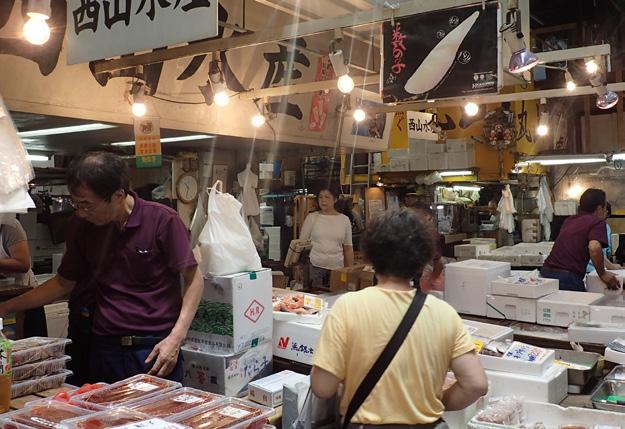
n Seafood accounts for more than 40% of the Japanese population’s animal protein consumption
However, Uematsu believes there are still some challenges when it comes to the new act.
“The number of species covered by the act is still small,” he said. “The EU covers all importing fish species with an earlier implementation of a similar regulation, and the US is considering legislation to increase its current 13 target species to all imported species. Japan should also increase the number of target species, and I hope that the government will take the lead among Asian countries as an advanced nation fighting against IUU fisheries.”
“The EU, US and Japan are also not following the same conditions when importing seafood,” said Hanaoka. “For example, all three import fish from southeast Asia, but if the key data elements for seafood required by each market are different, producers have to prepare documentation for each one, which is not easy to do. The three markets must come up with the same conditions to make importing easier. It’s also not always clear whether information on paper is correct, while there are concerns that the new act won’t reduce IUU fishing. This is where countries, regions and governments need to work together. International cooperation is key.”
Reaffirming sustainability
Hanaoka attested that the buying power of major retailers like Aeon and Seven & I Holdings could also play a positive role in the fight against IUU fishing. In the past, Japan was more reluctant than other countries to commit to sustainability or traceability, but now, several domestic retailers and seafood processing/distribution companies have updated their corporate policies to exclude seafood sourced from IUU fisheries and establish a traceability system.
Steps such as these, as well as moves by Japanese firms like Maruha Nichiro to join the SeaBOS initiative, are likely to have a huge international impact, said Hanaoka.
Hopes are high that the enforcement of Japan’s new act will influence international interest in strengthening and expanding cooperation among major seafood importers
to eradicate IUU fishing. Creating a seafood market that pursues environmental sustainability and social responsibility will also be necessary for Japan, given that the country’s affinity for fish isn’t likely to go away.
“This new act is based on US and EU laws, so there has been plenty of international cooperation with specialists, governments and NGOs prior to the enactment,” said Hanaoka. “The question now is how to implement the act and produce results. I am certain that Japan will continue to learn from and work with the US and the EU to generate change worldwide. Japan also needs to share examples of its failures as well as its successes as it continues on this journey. My hope is that it becomes a country that makes significant global contributions in the field of fisheries.”
For the latest news and analysis go to www.worldfishing.net JUNE 2023 | 13 INSIGHT
…it’s estimated that at least 30% of the seafood coming into Japan is sourced from IUU fisheries
‘‘
Wakao Hanaoka, Seafood Legacy
n Tokyo’s Toyosu is the biggest fish market in the world
NEWHORIZONS
Focusing on Fisheries Development
TIME TO RUN – CAPITALISING ON SEAFOOD’S COMPETITIVE ADVANTAGE
Industry leaders say the global seafood marketplace has completely changed in recent years and that a more resilient food category has emerged.

n More people became comfortable preparing seafood at home during the Covid crisis
“Some say Covid was the biggest marketing campaign for salmon,” Bakkafrost CEO Regin Jacobsen told a conference session at Seafood Expo Global (SEG) 2023 in Barcelona focusing on seafood business strategies in strange economic times. Like most companies, over the past three-plus years, the Faroe Islands-headquartered salmon farmer found itself tested by the pandemic and then more recently by the turbulences of the global inflationary and fuel and energy crises. But amid the socalled “polycrisis”, there’s been a silver lining: along the way, people have been brought closer to seafood as a food category – they’ve been buying more of it because they have gained the confidence to prepare it at home. Salmon has been one of the big winners in this regard, with its popularity now reaching new levels.
Before Covid, between 40 and 50% of Bakkafrost’s salmon went to the catering sector, but in the pandemic, most of this volume was diverted into retail. Having the ability to switch between foodservice and retail was hugely important for the company, Jacobsen said.
“We sold much more to supermarkets than we predicted or budgeted for,” he said. “Now people are used to eating salmon at home and are going out to buy it. Sometimes something good comes out of a crisis – more consumers are buying fish from supermarkets, and we are now seeing that while people are back eating in restaurants, they still buy fish from supermarkets. The demand is high for these products.”
“Now war is affecting the business,” Jacobsen said, explaining that Bakkafrost stopped selling fish to Russia two days after the invasion of Ukraine. At the same time, it stopped sourcing raw materials from the country.
“We now see that prices are increasing and that has an effect on our customers. But everything is increasing in price,” he said. “There are opportunities in every crisis, and if we can manage to utilise those opportunities during a crisis, we will be stronger on the other side. It’s about preparing ourselves, and learning how to navigate through the storms.
“In the Faroes, we say the danger is always when you are close to land because that’s where the rocks are, and that is something we need to think about when we navigate difficult waters – that there might be some hidden dangers,” he said.
The pandemic also allowed Trident Seafoods to show its resilience, said the US seafood company’s CEO Joe Bundrant. When Covid hit in March 2020, the Seattleheadquartered firm shut down its main office and sent out 500 staff to work remotely.
“We developed what I believe is a world-leading protocol for putting people into quarantine. Trident employs 5,000 people in Alaska and they rotate twice
14 | JUNE 2023 For the latest news and analysis go to www.worldfishing.net
In the Faroes, we say the danger is always when you are close to land because that’s where the rocks are
‘‘
Regin Jacobsen,, Bakkafrost
Jason Holland reports
a year making it 10,000 trips to Alaska each year – all of those individuals went through two weeks of quarantine in a hotel. If they left the room, they were terminated. We gave them three meals a day, exercise mats, Kindles to read and tried to keep them actively engaged. Once they went to their location where there was a ship or processing plant, they were kept in enclosed campuses. Our vessels would call into port and offload the harvest, but no-one was allowed to leave – we executed that in 2020 to perfection,” Bundrant explained.
At the same time, the company implemented major austerity measures – looking at every expenditure.
“Managing through crisis is what every business is about,” he told the SEG conference.
Future smart
Thanks in part to the agility shown by seafood companies, today’s marketplace is very different from the one that existed pre-Covid.
“Seafood in general has gained competitive advantage,” Jacobsen said, explaining that a lot of land-based farmed meats are fed on grains that have soared in price. “Inflation in these products has brought food prices up and they are not going to come down again.”
The Bakkafrost chief also believes that environmental, social governance (ESG) has become more important than ever before, and that it will directly shape the industry going forward.
Seafood already has an advantage when it comes to ESG, he said. “That gives us a good starting point, and it’s important that we start to run. I think that in 10 years from now, we will look back and see that something happened during this period.
“We need to do this smarter…we have to manage our stocks better; we have to find ways to produce more from less raw materials – like salmon which has a low feed conversion ratio. We need to make sure we have good fish welfare, we can reduce mortality and improve the smolt production etc. All these factors have become more important. It’s done with certification but not only that – the ESG area is already a huge universe and will continue to become more important.”
Aquaculture Stewardship Council (ASC) CEO Chris Ninnes agreed, highlighting that while terrestriallyproduced proteins are two dimensional in their use of land resources that are ever-decreasing, seafood production has a three-dimensional advantage thanks to the water bodies in which this takes place.
“Opportunities are there to be much more efficient,” Ninnes said. “Also, the environmental and carbon footprints of seafood – both farmed and wild – is far better than most terrestrial protein systems.
“I always like to think of seafood as part of a solution, rather than a problem. There are always things that you can do better, we all recognise that, but seafood is part of that future solution.”
Cost squeezes
With regards to the current inflationary pressures, with consumers struggling all over the world, Bundrant doesn’t believe the high prices will persist forever, but anticipates some difficult times ahead.
“At the end of the day, seafood is competing for a share of the stomach with all of the other foods on the planet and when peoples’ food dollars are squeezed, they’re looking for the best value,” he said.
According to Felix Ratheb, CEO of the South Africanbased seafood group Sea Harvest, the biggest challenge now, is that with the cost of sales as a business having gone up by 26%, it’s very difficult – probably impossible – to go to consumers in the current economic environment and ask them to pay that same additional amount for their fish.
“Post-Covid is a very difficult period. I believe it’s much tougher now than it was during Covid because of the huge inflation coming for every line item that we have,” Ratheb said. “There’s only so much you can push before the consumer doesn’t buy anymore. But you’ve still got to have a business and pay your employees, and have returns for shareholders etc. I think that’s a challenge we’re all facing right now.”
Bundrant also advised that the cost of repairing and replacing aging vessels, equipment and processes is rising at a rate that’s well in excess of the product price increases.
“Navigating through that is a huge challenge,” he said.
n Bakkafrost has seen consumers continue to buy large volumes of salmon in supermarkets

For the latest news and analysis go to www.worldfishing.net JUNE 2023 | 15 NEW HORIZONS
SUBSIDY OPPOSITION GATHERS MOMENTUM
A growing number of countries are signing up to end harmful fisheries subsidies and their contribution to the depletion of fish stocks, writes Jason
Holland
n Two-thirds of WTO members need to accept the Fisheries Subsidies Agreement for it to start benefiting fisheries and improving the lives of fishers
For the Fisheries Subsidies Agreement reached by World Trade Organisation (WTO) members in June 2022 to come to life and start delivering benefits for fisheries sustainability and improving the lives of fishers, it’s critical that two-thirds of those 164 members accept it as soon as possible, according to WTO Deputy DirectorGeneral Angela Ellard.
In a rally cry issued to parliamentarians around the world on 15 May 2023, Ellard urged politicians to engage further with their governments as well as legislators from other countries to help deliver the multilateral agreement. She explained the agreement is significant because by prohibiting certain harmful types of fisheries subsidies, it delivers on UN Sustainable Development Goal (SDG) target 14.6 after more than 21 years of negotiations, making it the first SDG target addressed through a multilateral agreement. Additionally, this is the first WTO agreement where members have used a subsidies discipline for an objective other than addressing purely economic effects of subsidies.
The agreement is designed to address the consequences to the ocean and the environment caused by harmful subsidies. It will seek to make fishing more sustainable by prohibiting subsidies to illegal, unreported, and unregulated (IUU) fishing as well as subsidies to fishing overfished stocks, and subsidies to fishing on the unregulated high seas.

This will be of major benefit to people in developed and developing countries alike, who depend on the fisheries sector to make a living and as a source of protein, Ellard said, adding that one of the most fundamental challenges facing the ocean is the dramatic and unabated
deterioration in global fish stocks.
“By some measure, nearly half of assessed fish stocks are overfished, [up] dramatically from 10% in the ‘70s and about 18% in 2001 when the fisheries subsidies negotiations began. Not only does this decline have huge repercussions for marine ecosystems and thus the global environment, it also has grave consequences for millions of people around the world who depend on fishing.” Unfortunately, some governments continue to provide
Data shows that governments spend about $22 billion per year in unsustainable fishing subsidies
Angela Ellard, WTO
fisheries subsidies without regard for their impact on sustainability, she said.
“By doing so, they are investing in the destruction of natural capital that should instead be paying generous dividends globally. Data shows that governments spend about $22 billion per year in unsustainable fishing subsidies. Just imagine what it would mean for fish stocks and marine health if that amount was instead spent on restoring fish stocks and sustainable fishing.
“The agreement thus is a meaningful leap forward in the race to preserve our ocean and its precious living resources as well as to promote sustainable development.”
16 | JUNE 2023 For the latest news and analysis go to www.worldfishing.net ANALYSIS
‘‘
Photo Credit: European Commission
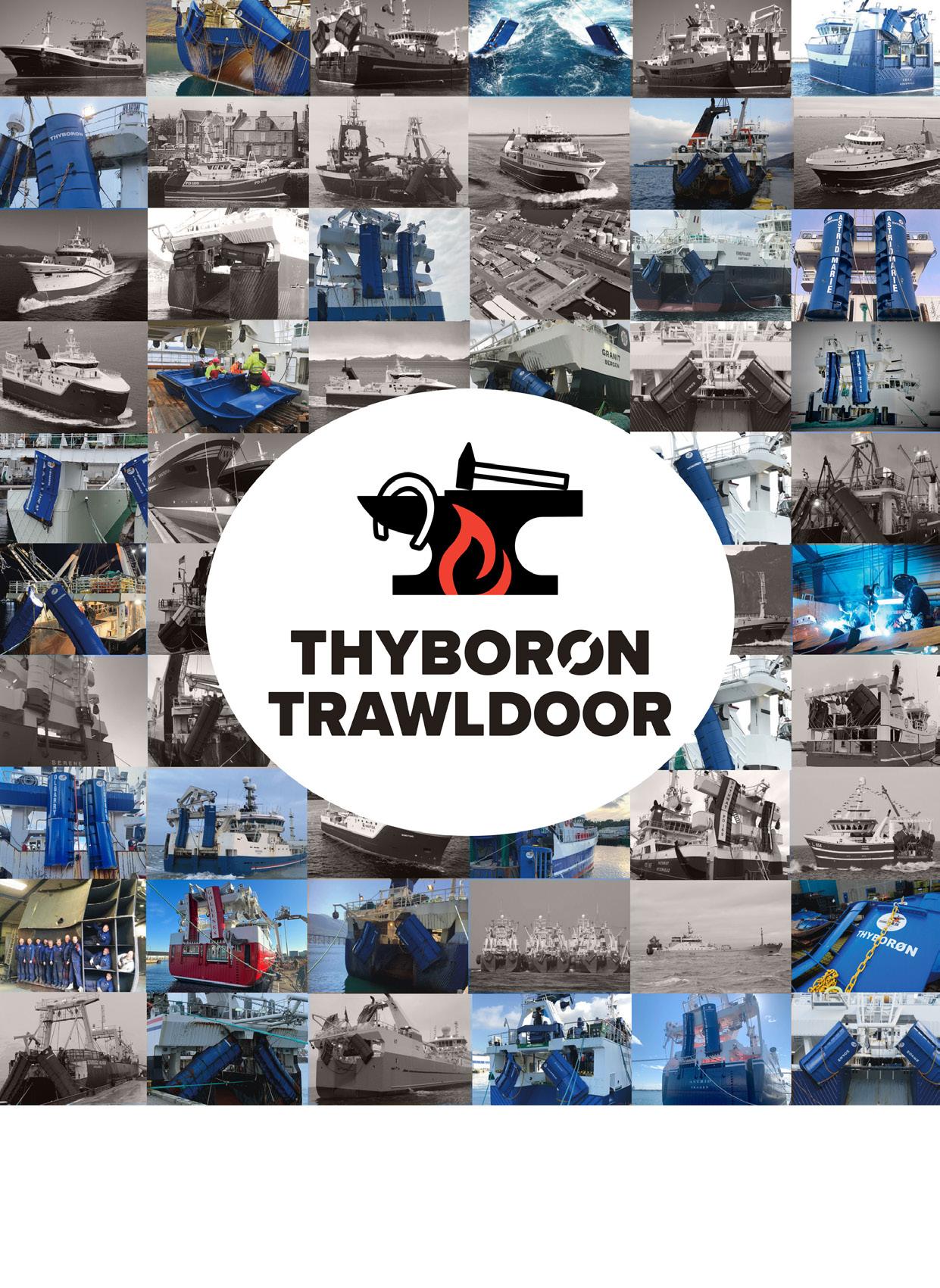
Thyborøn Skibssmedie a/s • Sydhalevej 8 • 7680 Thyborøn • Denmark Tel.: +45 978 31 922 • mail@thyboron-trawldoor.dk • www.trawldoor.dk MADE IN DENMARK CHOOSE QUALITY, CHOOSE THYBORON
Next steps
Moving forward, now that the agreement is concluded, Ellard confirmed that WTO members are engaged in two parallel work tracks to achieve further progress. The first of these is accepting the new agreement, whereby for it to enter into force, two-thirds of members must deposit their instruments of acceptance with the WTO. At the time of going to press, seven WTO members – the United States, Canada, Iceland, Switzerland, the United Arab Emirates, the Seychelles and Singapore – had completed their domestic processes and submitted their instruments of acceptance, while many others are at advanced stages of their acceptance processes and are expected to deposit their instruments in the upcoming weeks and months.
of negotiations, with a view to recommending further disciplines to the next Ministerial Conference, which will take place in Abu Dhabi in February 2024.
A central focus of the second wave of negotiations is disciplining subsidies that contribute to overcapacity and overfishing as well as appropriate and effective special and differential treatment for developing and least-developed country members, Ellard said.
Furthermore, to compel a successful conclusion of these second wave negotiations, WTO members agreed to a termination clause in the existing agreement, which would kick in four years after it enters into force if these negotiations are not completed.

“That puts a hot deadline in our members’ hands,” Ellard said, adding that delegations in Geneva are actively working on these negotiations.
She also highlighted that Article 7 of the agreement provides for the establishment of a dedicated funding mechanism to support its implementation by developing and least-developed country (LDC) members who have ratified it. This fund has now been established, with donations already made by Japan, Canada and Germany.
n The UAE deposited its instrument of acceptance for the agreement on 16 May, making it the seventh WTO member to do so
“The more members accept the agreement, the more positive momentum this creates, which encourages other members to expedite their processes,” Ellard said.
“My plea to parliamentarians from all WTO members that require parliamentary ratification is to say ‘yes’ to this agreement so that it can start delivering its benefits for ocean sustainability as soon as possible. Translating this agreement into meaningful action is squarely in your hands. Even if your system does not require parliamentary approval, I encourage you to urge your responsible authorities to take rapid action, for the sake of the fish and those who depend on it for their livelihoods.”
The second track is continuing negotiations to resolve the outstanding issues that could not be agreed at WTO’s 12th Ministerial Conference. At that meeting, WTO members agreed to keep working on a second wave
“Many others have made pledges to the fund, which we expect will become contributions shortly,” Ellard said. “A robust fund sends a strong signal to developing and least-developed country members that they will receive the assistance they need to implement the agreement, thereby encouraging them to ratify the agreement quickly.”
EU fuel subsidies
Separately, a new report has been published that finds EU subsidies are driving fossil fuel use instead of supporting socially and environmentally sustainable fisheries.
Commissioned by the Our Fish campaign and environmental law charity ClientEarth, the study “Better use of public money: the end of fuel subsidies for the EU fishing industry” determines that the EU fishing fleet was exempt from paying between €800 million and €15.7 billion in fuel taxes between 2010 and 2020, equating to up to €1.4 billion annually.
18 | JUNE 2023 For the latest news and analysis go to www.worldfishing.net ANALYSIS
The more members accept the agreement, the more positive momentum this creates Angela Ellard, WTO
‘‘
Photo Credit: WTO
This could be about to change as under the European Green Deal and Fitfor55 package every industry in the EU, including commercial fishing, is being directed to reduce emissions and cut fossil fuel subsidies. However, the report states that in the revised Energy Taxation Directive (ETD) proposal, the tax rate for fishing industry fuel is as low as 3.6 cents per litre, which is approximately 20 times lower than average tax rates used for road transport at 67 cents per litre. Even though the tax is small, a number of member states are opposing the removal of fishing fuel subsidies.
subsidies that can exacerbate overfishing and carbon pollution, so they work against decarbonisation and the environment,” she said, adding that the subsidies must be removed if the industry is going to transition to low impact, low carbon fishing.
Instead, EU member states who have important small-scale fishing fleets such as Spain, France and Germany could invest the revenue generated by fuel tax to pay annual salaries, train fishers professionally, support low-impact fishing projects, energy reduction and decarbonisation, regenerative practice and fisheries management initiatives, Hubbard said.
Furthermore, since the EU fishing fleet is currently very profitable, and the large-scale fleet is benefiting the most from fuel subsidies, member states could better support their small-scale fisheries with alternative subsidies, delivering improved socio-economic conditions and accelerating an urgently-needed decarbonisation of the EU fishing fleet, she suggested.
According to Our Fish’s report, removing the subsidies doesn’t mean a reduction in the support for the fishing industry. Instead, it argues that EU member states could fund a more ecologically sustainable and socially equitable and resilient fishing industry by removing fuel tax subsidies, while also delivering good economic outcomes, with an average impact score calculated by the report authors of 188% above fuel subsidies.

Our Fish has calculated by cutting fuel subsidies, the EU could have instead generated between €653 million and €1.4 billion in annual revenue and used it to pay the salaries of 20,000 fishers or fund over 6,000 energy reduction and decarbonisation projects.
No time like the present Launching the report in a webinar, Our Fish Programme Director Rebecca Hubbard said the study showed that subsidising fossil fuel use does no favours to the fishing industry or communities, because alternative subsidies can deliver better outcomes for fishers, the environment and the climate.
“The EU fleet is exempt from paying fuel taxes and these tax exemptions are indirect capacity enhancing
Hubbard also recognised that Russia’s war on Ukraine and the consequent inflated fuel and energy prices mean now might not be the most ideal time to instigate a fuel tax, but said the worsening climate and biodiversity crises have quickened the need for action.
“We’ll still be in this crunch point of having to rapidly change the way that we have to do things. Hopefully, the war in Ukraine will pass, but that doesn’t mean the rest of those crises will [too],” she said. “It’s a really tricky time – politically it’s very difficult to talk about introducing a fuel tax, but that’s really one of the reasons why we commissioned this report, because we know there are a number of other subsidies that are already provided to the fishing industry, and we also know that there are other ways that you can support the fishing industry. “Instead of burning more fossil fuel, we could actually be promoting increased resilience of fishing communities, we could be promoting a reduction in high impact gear, the transition to low carbon fishing, other professional endeavours or safety at sea – there are so many other things that we can do to support the fishing industry that deliver better social outcomes, better environmental outcomes and often better economic outcomes,” she said.
n The EU fishing fleet was exempt from paying up to €1.4 billion annually in fuel taxes between 2010 and 2020, according to Our Fish
For the latest news and analysis go to www.worldfishing.net JUNE 2023 | 19 ANALYSIS
There are so many other things that we can do to support the fishing industry
‘‘
Rebecca Hubbard, Our Fish
Photo Credit: European Commission
GOLLENES – IT’S ALL ABOUT VERSATILITY
More than 12 years have passed since the Fosnavåg-based owners of fishing company Gollenes AS sailed from Skagen with their 62-metre fishing vessel. It performed so well that they’ve been back to the Karstensen yard for a larger and more sophisticated replacement
The Ose and Kvalsvik families are behind the ownership of the new Gollenes, and the company is managed by Frode Kvalsvik. The next generation of the two families is already onboard as Ivar Ose Bjørneset and Willy Kvalsvik are among the crew.
In going to Karstensens for their new trawler, the owners were looking for a high level of operational versatility, and this is reflected in the capacity new Gollenes has to operate on fisheries for herring and mackerel, as well as industrial species, and also whitefish, with a processing deck, plus a silage plant to ensure full utilisation of everything that comes onboard.
Gollenes is laid out to pump catches over the port and starboard quarters, with a pair of 24-inch MacGregor electric fish pumps. Catches of pelagic or industrial fish are routed to the nine RSW tanks with a combined capacity of 1963 cubic metres, chilled by a pair of PTG FrioNordica 1300kW, 1.118.000 kCal/h systems, while whitefish catches pass to the processing deck, outfitted by Boa Tech with a pair of KM Fish Machinery gutting machines and with catches cooled using slurry ice from the Kapp Optim-ice BP-140 + T-4000 system.
There is a large aft trawl deck with a package of MacGregor electric winches, including 80-tonne trawl winches, pairs of 80-tonne and 60-tonne net drums, plus
auxiliary winches and a net sounder winch
Rerouting power
The energy layout is highly flexible, ensuring high reliability with a choice of operating modes. The configuration is on the premise that while fishing and with the winches in constant use, the PTO and shaft generator remain engaged, but when full power is needed for the winches, there’s a reduced energy demand on the main engine, enabling the ABC 6DL36 main engine as the main source of energy for both propulsion and power supply onboard. The main engine drives the Brunvoll Volda stern gear, with a 4500mm diameter CP95/4 propeller and an ACG 980, 750/110rpm reduction gear fitted with a PTO for the 2200kW/2750kVA Marelli shaft generator.
Auxiliary power is provided by the three 615kWe Nogva Scania DI16 generator sets, which are powerful enough to provide all the power Gollenes needs for normal running, including meeting the winch systems load requirements. If necessary, an additional 1000kW can be routed to the main shaft by running the diesel generators in parallel. The electrical system is provided with a Power Management System (PMS) which manages power consumption and automatic start-up of the generator system.
In addition, Gollenes has 950kW aft thrusters and an 850kW Brunvoll combined submersible azimuth/tunnel thruster forward. This is capable of providing forward
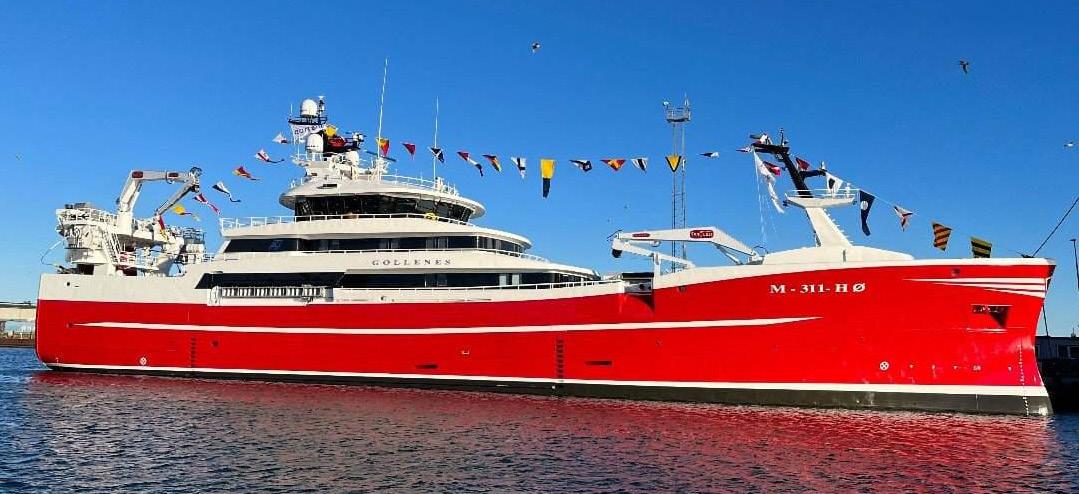
20 | JUNE 2023 For the latest news and analysis go to www.worldfishing.net NEWBUILDS
New Gollenes is larger than its predecessor at 69.99 metres and with a 14.8-metre moulded breadth, the new vessel designed by the yard also represents a serious step into the future in terms of the latest technology.
n Gollenes has been delivered by the Karstensen yard in Skagen and is capable of alternating fisheries for pelagic, industrial and whitefish species
45-tonne
on the aft gantry. The aft net crane and the forward deck crane are from SeaQuest.
propulsion in an emergency, or when simply operating at low speeds.
Eyes on the prize
Gollenes also has a 1100A shore current connection. This makes it possible for the ship to discharge without the use of diesel generators, although infrastructure is not yet available in all locations. The 360°-visibility wheelhouse is laid out with a pair of NorSap 1600 Comfort chairs facing the bank of screens forming the Furuno BlueBridge display, and a third in the aft wheelhouse control position overlooking the trawl deck.
The flexible display facing the wheelhouse team allows feeds from fishfinders, navigation systems, onboard CCTV and more to be programmed as required.

The fishfinding electronics onboard Gollenes is a practically all-Furuno setup, with a low-frequency FSV-25, medium-frequency FSV-85 and high-frequency FSV-75 sonars, as well as an Imagenex TS-360 trawl sonar, and FCV-38, FCV-1900 and FSS-3BB echo sounders. The trawl monitoring array is a Scanmar ScanBas 365 system.
The CI68 current log, the 2238 BB, 2318 BB, DRS6ANXT radars and SC-70 satellite compass are all Furuno equipment, and the GC80 gyro compass and AP80 autopilot are from Simrad.
Navigation systems are a pair of Tecdis T-2138A systems, and MaxSea Time Zero, Olex and Sodena plotters.
DANISH BUILD FOR SCOTTISH OWNERS
Enterprise III is the latest new groundfish trawler to join the Scottish fleet and owners James Lovie and partners went to the Vestværftet yard in Hvide Sande for their new trawler
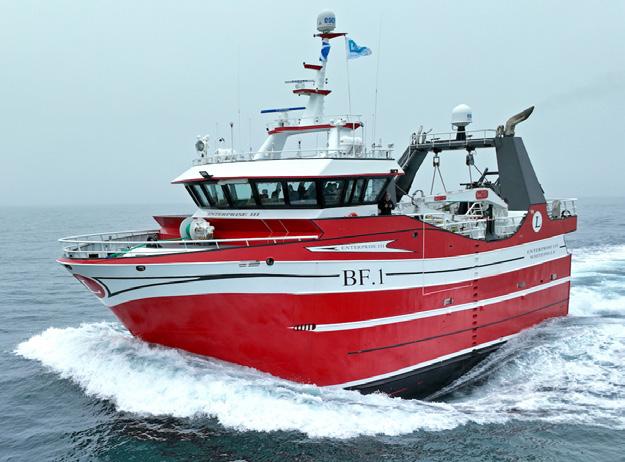
Designed by the yard and completed using a hull built in Poland, Enterprise III has a 28.67-metre overall length with a 10-metre moulded breadth.
The main engine is a 736kW ABC 6DZ driving a variable pitch, four-bladed 3,400mm propeller inside a highefficiency nozzle, via a Hundested CPG 280-2 reduction gear fitted with two PTOs for hydraulic pumps.
Hundested also supplied the 250hp hydraulic SFT 5 bow thruster. The engine control system with its three stations is from Lyngaa. Additional power is supplied by a pair of Caterpillar C 9.3 gensets delivering 244kVa and a single 40kVa Baudouin harbour set.
The package of hydraulic trawl hardware supplied by MacGregor and installed by AS:Scan, who also supplied the MT–3500 steering gear with two EL-hydraulic pump units to operate a triple rudder.
The deck is laid out with three trawl winches controlled by a Scantrol autotrawl, three pairs of sweepline winches at the head of the long trawl desk with drums large enough to spool ground gear, three net drums over the trawl lanes, pairs of bagging, outhaul and codend winches, and a forward mooring winch. There are three trawl blocks aft that can be tracked into the required position. The deck crane is a 2t/10m unit.
Enterprise III’s wheelhouse has a pair of Vejvad Hansen skipper’s chair facing the array of electronics supplied by Woodsons. The electrics on board have been fitted by Vest-EL in Hvide Sande. The catch handling deck onboard has been delivered by VCU, with a full complement of
conveyors and washers, a KM-Fish gutting machine and VCU’s Pack-At-Sea catch management system.
Lemvig company LMK supplied the fishroom chiller installation, cooling for the fish hopper and the pair of 4500kg/24h Buus ice machines.
For the latest news and analysis go to www.worldfishing.net JUNE 2023 | 21 NEWBUILDS
n The wheelhouse control position faces the five 55-inch of the Furuno BlueBridge system and a row of additional overhead monitors
n Enterprise III has been designed and built by Vestværftet
MARITIME INTELLIGENCE PLATFORM IDENTIFIES POTENTIAL ILLEGAL FISHING
When Thai authorities prohibited the landing of more than $7 million worth of tuna from the South Korean fish carrier Sun Flower 7, they were working with data that came from New Zealand-based Starboard Maritime Intelligence

Fisheries adviser Fransisco Blaha initially identified the unusual tracks of a carrier vessel that looked suspiciously like it was deploying fish aggregating devices (FADs) in the northern part of Kiribati’s exclusive economic zone (EEZ) and the adjacent high seas – which contravenes its licensing conditions. Deploying FADs is designated by the Western and Central Pacific Fisheries Commission (WCPFC) as fishing, and while carrier vessels can ship catches and transfer crew and supplies, fishing activity is beyond their remit.
Having noticed Sun Flower 7’s distinctive tracks, Blaha passed his analysis to the Environmental Justice Foundation (EJF) and the Thai authorities, when it was clear the carrier was headed to Bangkok – and Thailand’s Port State Measures (PSM) regulatory framework kicked in. This allowed investigation by Thai authorities in collaboration with the Kiribati Ministry of Fisheries and Marine Resources Development. As a consequence, the vessel was denied port use and escorted out of Thai waters.
“Francisco found the unusual zig-zagging pattern in November last year and let us know that this could indicate FAD deployment. This is noteworthy behaviour, so we have been identifying and flagging these tracks,” said Starboard’s Chief Product Officer Andy Hovey.
Collaborative action
Stopping illegal, unreported, and unregulated (IUU) fishing requires international collaboration. PSM frameworks are a crucial component of this, as they prevent vessels engaged in IUU fishing from using ports to land their catch.
“Since the vessel wasn’t going to offload its cargo to a port in the Pacific, it was initially harder to intervene, but realising that the vessel was going to Bangkok, I sent all the info I had, and I knew they would pick up on it,” Blaha said.
Tools such as Starboard that provide long track histories, analysis of vessel behaviour, and the capability to share analysis facilitate international collaboration. In this case Blaha, EJF and Starboard’s staff all used the platform to analyse the same unusual ship tracks.

“I have maintained good relationships in Thailand since
working there substantially in 2016 on Port State Measures. This includes a very clever and committed Thai-English colleague working with EJF. I have been communicating with them throughout the whole process, particularly, in terms of providing operational know how to discredit some of the excuses the vessel captain was providing,” he said.
FAD controversy
The use of drifting FADs is regulated by the Western and Central Pacific Fisheries Commission via conservation and management measures.
FADs make fishing more efficient, saving on fuel and other expenses, but they have come under increased scrutiny for the catch of juveniles, bycatch of non-target species, and the potential of masking overexploitation when operating in the high seas. As a result, some ecolabels only grant their certification to tuna catches not associated with drifting FADs, and some large retailers are marketing their tuna as FAD free.
“Providing maritime domain awareness for fisheries monitoring, control, and surveillance has been a focus of Starboard. We are now ingesting fishing authorisations from the 13 regional fisheries management organisations that cover most of the world’s oceans. Importantly, we want to facilitate the sharing of information amongst all fisheries experts; this case is a great example of how the sharing of analysis and expertise has a real impact,” Hovey said.
n Sun Flower 7’s master initially claimed to have been retrieving the FADs. But covering an additional distance of 300km is a significant use of fuel and was not believed to be a plausible reason for the vessel’s movements
22 | JUNE 2023 For the latest news and analysis go to www.worldfishing.net FISHING TECHNOLOGY
n Unusual movements of carrier vessel Sun Flower 7, during November 2022, in the northern part of Kiribati’s EEZ and the adjacent high seas
Image: Starboard Maritime Intelligence
Photo Credit: Environmental Justice Foundation
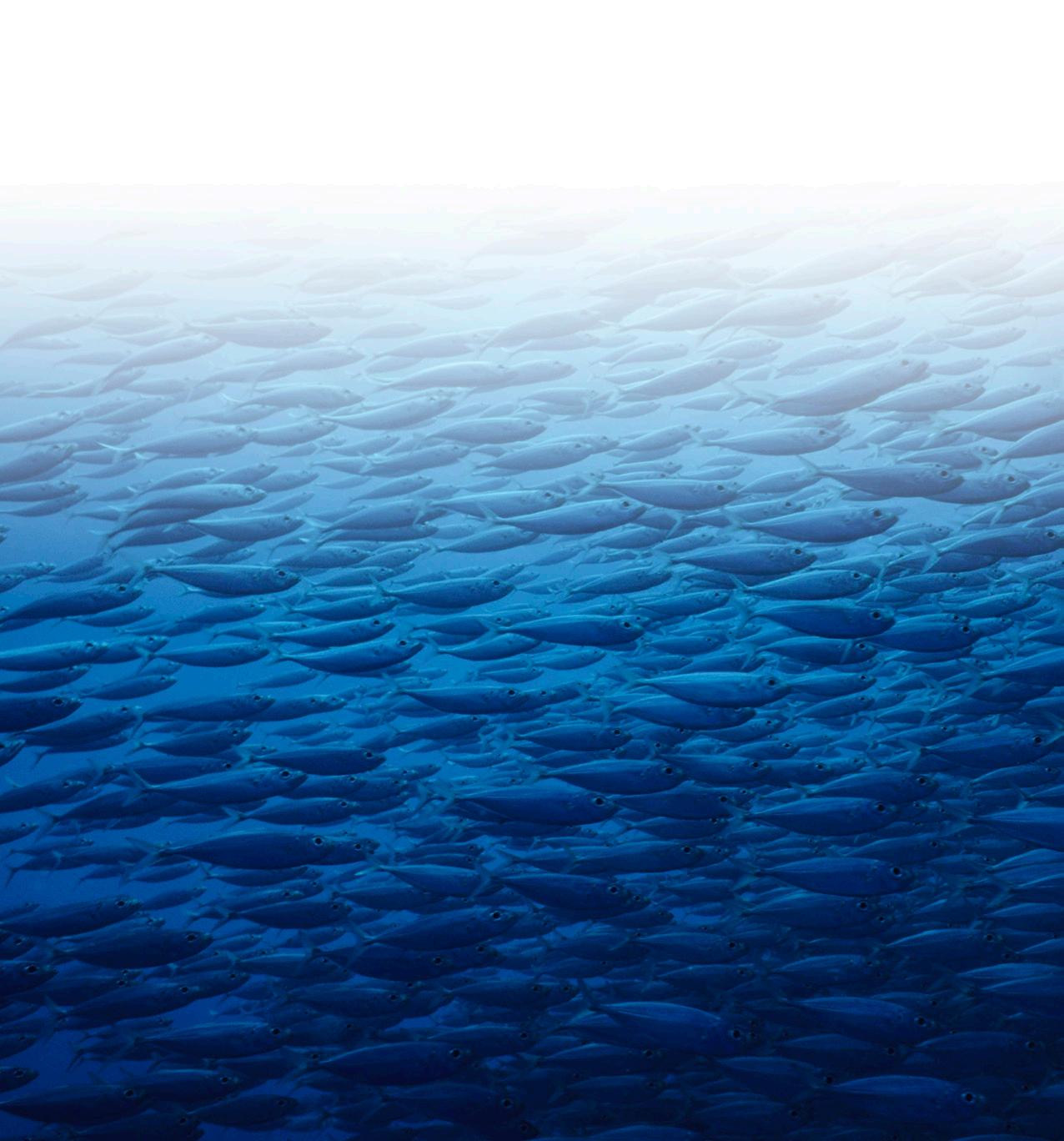
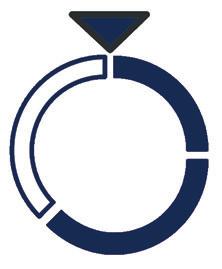


Promote your business to the right audience in the right place at the right time. Engage with our international audience of decision makers and buyers. The World Fishing & Aquaculture multi-media platforms offer our commercial partners a wide range of opportunities for campaign delivery. We deliver bespoke marketing packages with quantifiable ROI. Hannah Bolland, Brand Manager t: (+44) 1329 825 335 e: sales@worldfishing.net www.worldfishing.net Contact us today WORLDFISHING SINCE 1952 & AQUACULTURE Reach industry professionals with World Fishing & Aquaculture MAGAZINE RECIPIENTS 14,500 DECISION MAKERS 70% PAGEVIEWS PER MONTH 53,000 World Fishing & Aquaculture’s valued content focuses on all aspects of commercial fishing, relied upon by vessel operators, fleet managers, ship’s officers, and government departments.
ENHANCING DISTANT WATER FISHERY DATA COLLECTION
FCF has announced a partnership with Satlink to improve fishery dependent data collection in the distant water fishery sector using its Electronic Monitoring System (EMS) and scientific data analysis

EMS has been installed on several vessels participating in FCF’s fishery improvement projects (FIPs). This project increases the at-sea monitoring of fishing activities to ensure that the vessels are fully co-operating with the management measures developed by the relevant regional fishery management organizations (RFMOs) and domestic regulations, while also aligning with FCF’s sustainable development goals in supporting sustainable fishery practices.
The aim is to improve the accuracy of data such as catch composition and disposition, target and non-target species, which can assist in the assessment of fisheries resources through the monitoring of fishing activities using videos, image processing and AI automatic recognition systems.
In instances of by-catch occurring, the EMS records and saves images of the incident and the subsequent onboard handling process.
“We are delighted to work with our supply chain partners to expand the installation of electronic monitoring systems which will augment our at-sea observers and will greatly improve the quality and quantity of fishery dependent data,” said FSF Executive Vice President Arthur Yeh.
“This project not only aligns with FCF’s sustainable development goals, but also uses innovative technologies to help fisheries adopt more effective monitoring.”
Key Traceability (KT), FCF’s long-term partner in the FIPs, also highlighted the importance of EMS technology in improving the accuracy of fishing data and supporting sustainable fisheries development.
“EMS has become the most effective solution to addressing a lack of data in fisheries,” said Tom Evans, Key Traceability’s Science Manager.
“Many fisheries have already proven the effectiveness
of EMS, and the collected data can be vital information for achieving fisheries certification.”
The next phase of the project will focus on enhancing the application and deployment of electronic observer technology in the supply chain by installing more systems, reviewing and analysing reports, and implementing related improvement actions.
Game-changer for staying on nephrops
Echo, introduced a few years ago by Notus to Irish and Scottish trawlers fishing for nephrops, has proved itself an increasingly invaluable tool for more efficient and effective fishing
Bottom-hugging nephrops are notoriously difficult to detect and don’t show up in an echo sounder, so Notus developed a sounding board that delivers data to the wheelhouse, telling the skipper when prawns are entering the gear.
Notus Echo uses a simple grid that doesn’t serve as a selectivity device, but instead detects the distinctive sound of nephrops hitting the bars on their way back to the cod-end. A pickup receives the data and transmits this to a wheelhouse display to provide a real-time indication of the catch rate.
This gives the skipper precise indications
of which parts of each tow are delivering catch, and which are simply a waste of fuel.
Integrating the Echo with a Sodena system generates a clear colour-coded diagram of each tow, showing the nephrops hot-spots.
“We’ve found the Echo very good for detecting prawns,” said skipper Alexander MacNeil of 16-metre twin-rigger Silver Crest CY-270. Fishing off the west of Scotland, Silver Crest’s Echo is integrated to the Notus Trawlmaster setup which also monitors door-spread, clump alignment and warp lengths.

In Ireland, skipper Patrick Flannery of the 24-metre Cú Na Mara said that they have achieved excellent results with the latest Notus technology, fishing for deepwater nephrops on Porcupine Bank.

“Yesterday we just concentrated on the
data from the Echo and we had the same amount of prawn for half the fishing time as the day before,” he said.
Cú Na Mara is working with the latest model of receiver (TM900ET) with the long-range hydrophone (G901), providing a clear acoustic link to the trawl mounted sensor at a range of 1,200 metres.
24 | JUNE 2023 For the latest news and analysis go to www.worldfishing.net FISHING TECHNOLOGY
n Satlink systems have been installed on several FCF vessels participating in FIPs
n Cú Na Mara has achieved excellent results with Notus Echo while fishing for nephrops on Porcupine Bank
n FCF is working with Satlink to improve data collection in distant water fisheries
2024 18 20 TO Smárinn Kópavogur Iceland 2024


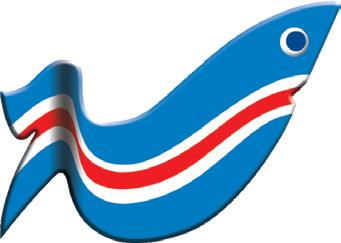
We look forward to welcoming you in 2024
The Icelandic Fisheries Exhibition covers every aspect of the commercial fishing industry from locating, catching, processing and packaging, right through to the marketing and distribution of the end product.
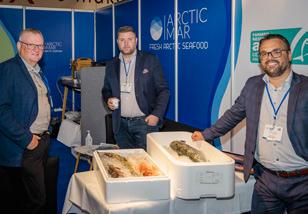


For more information about exhibiting, visiting or sponsoring, contact the events team

Visit: Icefish.is Contact: +44 1329 825 335 or Email: info@icefish.is
#Icefish
Organised by: Media Partner:
14 th IN PERSON l ONLINE
& Awards
SEP
INVOLVING KITTY AND FIDO IN BLUE ACTIONS
A new one-stop-shop is looking to connect by-catch mitigation projects with the seafood industry, writes Jason
Holland
Officially launched at Seafood Expo Global (SEG) 2023 in Barcelona, the Bycatch Solutions Hub is a web-based platform connecting retailers and other businesses that want to financially support projects to reduce ocean wildlife by-catch undertaken by organisations capable of implementing in-the-water solutions.
Developed by the US-registered non-profit Sustainable Fisheries Partnership (SFP), the hub has been sponsored by Purina Europe, the petfood manufacturing arm of the Nestle Group, with the company’s buyer Nicola Bedding explaining how challenging it can be for the pet food industry to get information on seafood sources and the origins of the by-products being utilised in products.
“We have plenty of petfood varieties out there that are particularly liked by cats and dogs, but we realise we need to be sourcing these ingredients in a more sustainable way and ensuring a resilient supply into the future. We’re also thinking about working towards sourcing ingredients that aren’t having a negative impact on the ocean, by, for example, the methods being used. This brought us to bycatch, which is known in the industry as an issue. It’s also something that Purina is keen to address,” Bedding said. Purina therefore saw that there was a place for such a tool that shares information, knowledge and experience as well as providing companies with the means to support projects and trials as well as fisheries improvement projects (FIPs) that are looking to advance, she said.
“We also see this as a great opportunity for amplifying and multiplying the effect as more likeminded businesses come together through the same platform and essentially make a bigger impact on the industry and the by-catch issue.”
Purina will also look to fund some projects through the hub, Bedding said.
supply chain partners. Recommendations on mitigating those risks and reducing by-catch were also passed on.
“As we did these things, we started to realise there needed to be more tools out there available to industry on by-catch. There was really no one place to go as a seafood buyer to learn more about what solutions may already be out there and being implemented, what opportunities there are to trial new things, and what FIPs were already taking different approaches to this. We decided to pull it all together into this one industry platform,” Novak said.
Underlining the by-catch problem, she said the unintended catch of ETP marine species in commercial fisheries is one of a number of significant threats to ocean biodiversity, stressing that this has come despite a considerable increase in the number of fisheries that are certified as sustainable or in FIPs.
Mobilising fisheries funding
Another intention of the hub is to raise the profile and visibility of new and existing industry efforts to reduce the by-catch of vulnerable marine species, such as the use of circle hooks and eliminating wire levers in certain tuna longline fisheries in the Western Central Pacific, while in Eastern Canada there’s a snow crab FIP that’s trialling new rope-less pot and trap gear to reduce the risk of whale entanglement, Novak said.
Filling the information void
SFP’s Biodiversity and Nature Director Kathryn Novak told the launch event there’s an increasing interest towards wider impacts of commercial fishing on the wider marine environment and biodiversity. “Because of that, our partners have been asking more questions,” she said.

The hub follows on from a partnership project that SFP started two years ago with Birdlife International and Whale & Dolphin Conservation that was conducting endangered, threatened and protected (ETP) species by-catch audits. Those audits were used to identify fisheries that might be impacting or interacting with sea turtles, sharks, marine mammals and seabirds and then highlight those risks to
“We hope the hub will be a place to not only showcase and highlight these efforts to the broader market but also be a place for fishers to come and share lessons learned,” she said. “The primary goal is to provide a sort of matchmaking service – bringing together interest, funding and expertise to reduce ocean wildlife by-catch. Certain criteria need to be met for projects to feature on the hub. It also requires projects to submit quarterly reports on the activities implemented with the funding provided. SFP’s longer-term hope is to be able to track and quantify some of these projects through the hub, Novak said.
According to Tracy Murai, Assistant Director Global Fisheries – Sustainability at seafood processing giant Thai Union, which has been working with SFP for the past 18 months to analyse its seafood portfolio, including conducting by-catch audits, the new solution is “a great way for everyone to roll up their sleeves, get their feet wet, and get involved in creating some change”.
26 | JUNE 2023 For the latest news and analysis go to www.worldfishing.net FISHING TECHNOLOGY
The primary goal is to provide a sort of matchmaking service – bringing together interest, funding and expertise to reduce ocean wildlife by-catch
‘‘
Kathryn Novak, SFP
n SFP Biodiversity and Nature Director Kathryn Novak (left) with Tracy Murai of Thai Union (centre) and Nicola Bedding of Purina Europe (right) for the official launch of the hub
Photo Credit: SFP
Join us in 2024
• Keynote Address: Iceland’s Use of Captured Seafood By-Products
Jonas R. Vidarsson, Director of division of value creation, Matís
• Keynote Address: What role may byproducts play in the future of marine ingredients?
Petter Johannessen, Director General, IFFO
• Innovative Technology unleashing fish waste value potential

Wenche Uksnay, Cluster Manager, NCE Blue Legasea
• Co-Product Valorization – Towards an industrial Implementation of innovative Food Processing Concepts to achieve 100% Utilization
Dennis Lohmann, Head of Technology Management, BAADER & Dr Pia Meinlschmidt, Product Manager Fish, Food Science & Technology, BAADER
• The Journey to 100% Utilisation
Erla Ósk Pétursdóttir, Managing, Director, Marine Collagen ehf
• N-Atlantic pelagic fish oils originated from Herring and Mackerel - The new exciting Natural fish oil source in times shortage

Snorri Hreggvi Osson, CEO, Margildi
Please note: recordings of the sessions are also available
Innovation | Industry insight | Knowledge Sharing
To make your purchase, or download the papers visit: icefishconference.com contact: +44 1329 825335 or email: info@icefishconference.com #FishWasteForProfit
Operated by:
Media Partner:

5th 2024
WORLDFISHING SINCE 1952 & AQUACULTURE
to maximise return on investment from potentially discarded parts of the catch that can be turned into high value products for non-food sectors.
2022 Downloads still available including: How
RUSSIA REMAINS DEFIANT
Despite Western sanctions, Russia continues to harbour bold expansion plans for its seafood processing industry
Sweeping sanctions from the West have blocked the way for many critical technologies to enter Russia, thereby making the construction of new onshore fish processing plants a tall order. On the other hand, though, the same sanctions have also given Russian authorities and businesses sufficient reason to expand the country’s processing capacity, thereby making Russian seafood far more independent and profitable as an industry.
Under an ambitious development programme embarked on by the Russian Agricultural Ministry in 2021, the country targets seeing the share of fish processed through domestic capacity rising from 25% to 80% by 2030 – roughly equating to 4 million tonnes of product.
In truth, the idea to move away from processing Russian fish overseas had been brewing in the Russian government for several years but fully materialised after China imposed harsh Coronavirus-related restrictions on Russian fish imports at the end of 2020. In previous years, China had processed around 1 million tonnes of Russian fish, accounting for 34% of total Russian fish exports.
In the end, Russian fishermen managed to direct additional volumes to other markets, including Japan, Korea and Vietnam, but market participants admitted the Chinese ban inflicted a lot of pain on the industry. Among the first affected by this action were the pollock catchers who have historically had the biggest reliance on the Chinese fish processing infrastructure.
At the beginning of the Ukrainian conflict, it looked like
Western sanctions could derail the Russian fish processing industry development programme. And in May 2022, the Russian Industry and Trade Ministry voiced concerns that fish processing plants were forced to switch to used equipment since some key technologies were unavailable on the domestic market.
The Ministry found that nine companies in Russia were manufacturing fish processing equipment, but among the absent equipment, there were no high-tech skinning or filleting machines being produced.

Alexey Mostovshchikov, a member of the General Council of the political party Delovaya Rossia, said fish processors consequently faced the hard choice of switching to use older, less advanced equipment of previous generations. But he also promised that by whatever means necessary, the country’s fish processing would continue, including by sourcing certain technologies from Russian-friendly countries – provided, of course, they are not subject to secondary sanctions.
Circumventing sanctions
There’s no doubt the sanctions have led the Russian fishing industry to suffer. In a January 2023 report, the Russian Union of Fishermen, Varpe, warned that the fleet renewal programme had stalled. One of the most striking examples of this was the construction of six trawlers ordered by the Russian Fishing Company (RFC) had been suspended.
Under the contract with a St Petersburg shipyard, all ships should have been handed over to the customer by
n Russian fishermen want to process more of the fish they catch onboard their vessels
28 | JUNE 2023 For the latest news and analysis go to www.worldfishing.net PROCESSING
(Photo Credit: Rosrybolovstvo
2025, but the new reality is it’s doubtful that the vessels will be ready before 2030. Varpe suggested the key problem was a lack of important equipment, with a long list including main and auxiliary engines, controllable pitch propellers, main switchboards, steering and thrusters, pumps, deck equipment, fishing gear and factory deck equipment.
Varpe claimed that in total, 24 fishing vessels at various construction stages lacked necessary equipment. Meanwhile, in May 2022, the Russian government approved a parallel import scheme under which Russian businesses are allowed to import some goods without the consent of the intellectual rights holders. During the past year, fishermen have tried to take advantage of this facility, ordering certain equipment in Europe through third-countries like Turkey, the United Arab Emirates (UAE) and Kazakhstan.
However, a spokesperson for Varpe confirmed these attempts eventually failed. While several Russian fishing companies had indeed imported Western equipment through third-countries last year, they were not able to put the machines into operation without service support from the suppliers. It’s been said that one company even tried to hack the software to put the machines to work, but these efforts brought even more trouble since the actions resulted in incorrect operations and failures which the company was unable to fix.
Consequently, parallel imports are no longer seen as a reliable option to source the necessary technologies. Furthermore, in March, Turkey, which emerged as the key transit hub for Russia, blocked the re-export of sanctioned Western goods. And in April, some restrictions on parallel import were also imposed by Kazakhstan. Other countries in the Middle East and Central Asia also face mounting pressure to ensure they are not used to circumvent sanctions.
Against the odds
Nevertheless, and despite the challenges, it appears as though the Russian coastal fish processing industry is growing. In April, the Russian federal agency for fisheries, Rosrybolovstvo, estimated the Far Eastern onshore fish processing plants could handle 1 million tonnes of pollock catches in 2023. Last year, Russian fishermen caught 1.9 million tonnes of pollock, the highest figure ever.

A source in the Russian fishing industry who wished not to be named said that Western sanctions are no longer seen as a threat to the processing industry’s development. The source explained that every company scrambles to find its own way to deal with a lack of technologies but claimed that “the mission is quite possible”.

It was highlighted there’s a growing reliance on Chinese technologies, especially in the Far East, plus some companies from countries deemed unfriendly continue to sell their products to Russian customers.
The source reminded WF that the sanctions have not prohibited selling fish processing equipment to Russia and explained that the problems in this field are primarily associated with Western sanctions against the logistics and banking sector, which made delivering the ordered goods and paying the bills a tricky task. However, these issues are already sorted, the source said.
For the latest news and analysis go to www.worldfishing.net JUNE 2023 | 29 PROCESSING
Photo Credit: Ostrovnoy fish processing plant
n Rew fish processing plant under construction
n Russia is renewing its fleet and expanding its processing infrastructure
According to the source, the future of the onshore fish processing industry is now tightly linked to the second round of the state-run investment quotas programme, under which the Russian government distributes fishing quotas among investors who are willing to renew fishing fleets or build processing infrastructure.
Within the first round, which started in 2017, the Russian government signed investment agreements for the construction of 64 vessels and 27 processing plants, with a total worth of 240 billion roubles (around US$4 billion). The second round, slated to begin in 2023, is expected to focus even more on expanding the processing capacity.
Eyeing independency
Under the second round of the investment quotas programme, the Russian government originally considered obliging fishermen to process up to 70% of catches onshore. Several market players opposed this idea, claiming it would be better to process more fish onboard, and it was eventually abandoned. Still, it is believed that fish processing will get more attention than during the first round.
The delivery of catches to the shore, in general, should be a top priority of the industry’s regulation, said Maxim Kozlov, head of the Association of fishing enterprises of the Sakhalin region. Currently, authorities are designing bylaws to define the requirements for the onshore processing plants to participate in the second round of the reform. The issue of the development of fish processing also goes hand in hand with the Russian fish industry’s export opportunities. Russian businesses believe that processing fish domestically not only helps sell products to foreign customers with higher added-value but also will expand the list of sales markets.
Rosrybolovstvo’s proposal on the mandatory processing of 70% of fish at coastal factories would help fishermen to boost the share of premium products, which would increase demand for Russian fish on the world market, said Alexei Osintsev, President of the Russian Association of Fishing Fleet Owners, but he added that onboard fish processing should also not be neglected.
In the wake of sanctions, the Russian Agricultural Ministry unveiled plans to help direct Russian fish into new markets in Africa, Asia and Latin America. The Russian fishing industry is still searching for alternative sales markets due to looming fears of new Western sanctions. However, as
it stands, Russian fish is doing relatively well on the global market, including growing supplies to Europe.
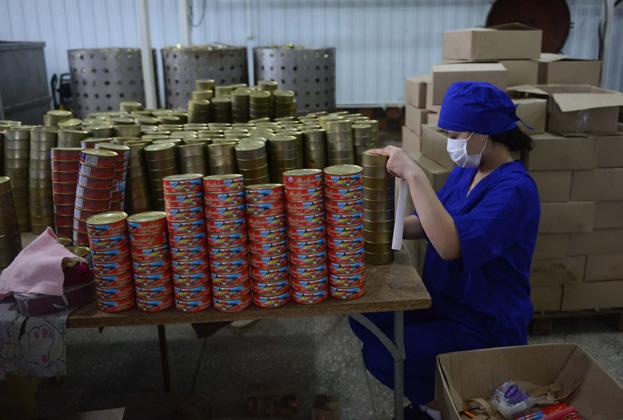
In 2022, Russia exported 198,800 tonnes of fish to Europe, 18.7% more compared with the previous year, Varpe reported, citing the official data. Moreover, Russian companies earned €940 million in revenue from selling fish to European customers, almost 60% more than in 2021. Osintsev said that a growth in sales of Russian to Europe fish export was largely secured by expanding domestic processing capacities. This could also explain the jump in revenue, with Russian fishermen now exporting products with a higher added value.
Despite recent progress, there is still room for growth in the Russian fish processing industry. In this regard, Varpe estimated that China, Japan and Korea together imported 1.66 million tonnes of Russian fish last year, most of which was landed at processing plants. Additionally, Varpe acknowledged that Russian fish exports to the EU are in a risk zone and also warned that it would be extremely challenging for Russian businesses to find a replacement for the European market. In theory, it would be easier if Russia sold processed fish products instead of raw fish, but there are no guarantees whether this is the case.
n Russia wants to increase the share of domesticallyprocessed fish products to divest exports from unfriendly countries

30 | JUNE 2023 For the latest news and analysis go to www.worldfishing.net PROCESSING
Photo Credit: Prikumsky Cannery
Photo Credit: Russian Agricultural Ministry
EU GIVEN NEW ANTI-IUU IMPORT ADVICE

European Commission and European Union member state advisors, the Market Advisory Council (MAC) and the Long Distance Advisory Council (LDAC) have underlined the need for harmonisation of import controls to prevent products of illegal, unreported and unregulated (IUU) fishing from entering the EU market.

• According to MAC and LDAC members, the following needs to take place:
• Development and application of standardised EUwide risk analysis criteria and of clear benchmarks for the verification of high-risk catch certificates (import documents) and for the inspection of consignments
Accountability for member states that fail to uphold key requirements of the EU legislation, including the potential initiation of infringement procedures
• Increased transparency on the implementation of the EU legislation against IUU fishing, including through publicly availability of the implementation reports submitted by the member states to the Commission and the provision of comprehensive data
Swift adoption and operationalisation of the CATCH IT system, the new digital database for catch certificates, which is part of the ongoing revision of the EU Fisheries Control Regulation, including familiarisation by national authorities and by third-countries
Allocation of sufficient capacity, resources and support, both at EU and national levels, with the involvement of the European Fisheries Control Agency (EFCA), to ensure

effective implementation of the current legislation as well as an effective delivery of the new system
“While significant improvements to import controls are expected with the entry into force of the CATCH IT system, it is essential that the Commission and the member states adequately prepare for its operationalisation as well as to keep working on the implementation of the current legislation, which will be in force for several more years, so that EU consumers have access to traceable products,”
MAC Chair Yobana Bermúdez said.
Co-funded by the EU, MAC is composed of organisations representing the entire seafood value chain (primary producers, processors, traders, suppliers, retailers and trade unions) and other interest groups (environmental and development NGOs), while LDAC is an EU fisheries stakeholder body that currently comprises 54 member organisations from 12 EU coastal member states.
FISHING
n MAC and LDAC members have called for the fast adoption and operationalisation of the CATCH IT system
For the latest news and analysis go to www.worldfishing.net JUNE 2023 | 31 PROCESSING
WF Media 2015 (A4 landscape)_Layout 1 15/10/2014 10:07 Page 1 Visit worldfishing.net Email subscriptions@mercatormedia.com Or Call +44 1329 825335 For multiple users or site access, email corporatesubs@mercatormedia.com ENQUIRE TODAY FOR CORPORATE SUBSCRIPTIONS fishing industry professionals around the world Informing over 16,765 Unlock full access to World Fishing & Aquaculture today with our digital and online subscription package. World Fishing is essential reading for vessel owners, fleet managers, and decision makers in every sector of the commercial fishing and aquaculture industry. For full online access SIGN UP FOR FREE Instant access to industry news • Expert opinion • Monthly features Weekly eNewsletter • Special reports CONTACT DETAILS: GET FULL ACCESS! WORLD
SINCE 1952 & AQUACULTURE
AQUACULTURE’S CONSUMER-CONSUMPTION CHALLENGE
Despite the industry’s growth, people and markets are increasingly turning away from the seafood category, writes Jason
Holland
n Average global seafood consumption fell to a level of 20.2kg in 2020

If aquaculture and the farming of aquatic products is to live up to the industry’s ambition to be one of the planet’s leading food supply sectors then it needs to help rebuild seafood consumption worldwide, attendees heard at the recent Seafood Expo Global (SEG) 2023 conference session entitled “Building Future Seafood Consumers”. It was also stressed at the event that these endeavours will be greatly helped by addressing some of the negative perceptions that people have of aquaculture.
Establishing that while there’s strong competition in the aquaculture sector, such as Norwegian salmon versus Chilean or Canadian salmon, the session reinforced the reality that its biggest challenge is the diets of many people around the world don’t include seafood or enough of it. It was highlighted that seafood accounts for just 1.6% of Canadian diets, for example. Compounding the situation, many well-established seafood markets are experiencing declining consumption trends. This is despite seafood being universally-recognised as the principal source of the long chain omega-3 fatty acids central to human health and development.
According to the Food and Agriculture Organization of the United Nations’ (FAO) 2022 edition of the “The State of World Fisheries and Aquaculture” (SOFIA) report, average seafood consumption fell by 300g per capita to 20.2kg in 2020. The FAO also notes that aquaculture accounted for 56% of the amount of aquatic animal food production available for human consumption.
The Building Future Seafood Consumers conference heard that the declining consumption trends have continued.
According to Javier Garat, Chairman International
Coalition of Fisheries Associations (IFCA), the Spanish market has a number of problems, not least a 20.4% drop in the population’s total seafood consumption since 2008, with at-home fish-eating now down to a level of 20kg per capita, with dining-out taking this up to only between 35 and 37kg.
“We are very concerned about that reduction of 20.4% in general consumption,” Garat said, adding that another problem the industry faces is that a lot of detrimental misinformation exists in the public domain.
“Seafood consumption is part of our history in Spain; it’s part of our tradition, our culture and our gastronomy, but things have been changing in the past few years. Consumption habits are changing. In families, both parents work, we don’t have time to cook, we don’t have time to buy and it’s getting more difficult. We are trying to make consumers fall in love with fish again,” Garat said.
We are trying to make consumers fall in love with fish again
Javier Garat, IFCA
‘‘ Vegan competition
Despite being a giant of the global seafood economy, Norway is also seeing a declining seafood consumption trend amongst its population, confirmed the Norwegian Seafood Council’s (NSC) Director of Global Operations Børge Grønbech.
32 | JUNE 2023 For the latest news and analysis go to www.worldfishing.net AQUACULTURE
“Our main competitor is red meat,” Grønbech said of the global seafood industry. “But what we are seeing today is that many consumers are moving from red meat directly to the green sector – vegan. Our role is to ensure that we keep consumers and that they can consume sustainable, safe and healthy seafood.”
To achieve this, NSC conducts a lot of consumer analysis – looking into the competition in different markets and looking into trends, he explained. Much of the work it’s doing is based on insight and then transferring that into activities.
“Based on the insight we have assembled during the years, with our communication based on three different pillars: It’s about nature and where Norway is located; it’s about people and the industry that is producing quality, healthy and safe seafood; and it’s also about sustainability – we have to make sure Norwegian seafood is relevant when it comes to sustainability.”
Grønbech continued: “At the end of the day, it’s about communicating a story and messaging that’s appealing, trustworthy and engaging…and ensuring that Norwegian seafood stays relevant for different consumers around the world.”
Moving forward, he said the council has identified that it needs to work together with others to develop the market.
“We never talk negatively about our competitors within the seafood industry, that’s very important for us,” Grønbech said. “It’s very important to have key insights in order to do the right thing…we are doing a lot of work to understand what consumers in different markets are thinking and to make sure that we have the right messaging and can deliver the right products.”
“While most of the products we use are wild-caught, aquaculture is probably the best solution to fishing in terms of sustainability, but it’s a process that’s ongoing in Mexico,” Orellana said.
Farming opposition
Seafood consumption is also “very, very low” in Chile, said Arturo Clement, Chairman of the country’s salmon marketing council SalmonChile. This is despite farmed salmon being the country’s number one food export, with the product representing 35% of total world production.
Børge Grønbech,
Promoting sustainability
Consumer education is also going to be key to Mexico’s plans to boost consumption, said Compesca board member and CEO of Orca Seafoods, Mauricio Orellana.
“The vast majority of seafood consumed in Mexico is imported and the challenge we face, together with the authorities and government, is to teach consumers about what they’re eating.”
There’s a lot of negative talk in the market about chemical use, glazing etc that’s proving “very challenging” for the industry, Orellana said.
Compesca represents a group of large producers in Mexico, accounting for approximately 20% of the country’s production, with segmented associate companies taking this up to a level of around 55%. Like NSC, it has become increasingly focused on delivering messages of sustainability to the general public, said Orellana. The hope is it will increase seafood consumption in Mexico, which currently stands at around 13.5kg per capita, while also placing additional value on the country’s products and empowering its producers.
Mexico is an exporting market, with only 30% of its own seafood products consumed domestically and the other 70% exported, explained Orellana. The country is also a net seafood importer, with most of the products it consumes predominantly being lower value species sourced from Asia. That said, seafood accounts for just 2% of total retail food sales, with shrimp, tuna, salmon and tilapia among the main species purchased.
Clement also confirmed there’s strong public opposition to aquaculture as an industry and said that a number of NGOs have fuelled this hostility. “We do have an impact on the ocean, we use antibiotics; our challenge is to show that we are reducing those negative impacts. We are doing responsible salmon farming, we are using our natural resources responsibly. But we also need to improve the economy and quality of life of our people,” he said.
At present, Chile doesn’t do much in terms of seafood promotion in the domestic market, explained Clement, instead its focus has been “to develop consumers in our extended markets”. Its main market is the United States, which now accounts for close to 45% of Chile’s salmon exports. This has increased from 36.2% in the last four years, with Chilean salmon representing 55% of the US’s total salmon imports, equating to 57,000 tonnes. Chiles’s other key markets include Japan and Brazil.
Despite these efforts, the US population’s consumption of farmed salmon is a lot lower than in many other markets, particularly in central areas, Clement said.

“Our message in the United States is we want to improve salmon consumption, because it’s a lot more sustainable than the other proteins,” he said. But he added that it’s been a difficult for this communication to hit home amid a lot of “bad press” in the US about aquaculture, especially salmon.
This is despite clear evidence that salmon has the lowest carbon footprint, the lowest water footprint, and the most efficient production and feed conversion, Clement said.
“That message is not in the market and that’s one of our challenges – to inform consumers that aquaculture, and in this case salmon, is a sustainable option for them,” he said. “We need to increase the consumption of salmon, and to also improve the image of Chilean salmon – becoming the preferred choice of consumers.”
For the latest news and analysis go to www.worldfishing.net JUNE 2023 | 33 AQUACULTURE
Our role is to ensure that we keep consumers and that they can consume sustainable, safe and healthy seafood
‘‘
NSC
n Efforts are ongoing in multiple markets to increase the consumption of farmed salmon
Known as the worlds largest stockist of mooring- and deck equipment
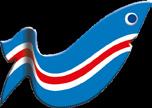







We have over 20 000 tonnes of anchors, chains, shackles, buoys and other mooring equipment
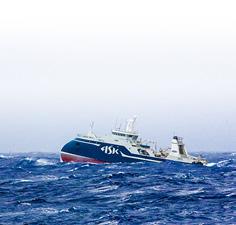























A Global Leader in Frozen Food Packaging







Beck Pack Systems A/S

DK-3700, Roenne, Denmark
Tel: +45 56 95 25 22 info@beck-liner.com
Beck Pack Systems, Inc. Seattle, WA, USA


Tel: +1 425 222 9515
The






ISO-9001, ISO-22000, FSSC 22000 certified manufacturer and supplier of block liners, folding cartons, and freezer frames for the international food processing industry. To find the agent in your region visit: www.beck-liner.com

34 | JUNE 2023 For the latest news and analysis go to www.worldfishing.net PRODUCTS & SERVICES DIRECTORY
Aquaculture Block Liners WWW.WASSP.COM Sales@wassp.com +64 9 373 5595 MORE FISH LESS TIME LESS FUEL WASSP Directory May 2021.indd 1 27/04/2021 11:32 High quality antifoulings and coatings for fishfarming net pens Netwax E4 Grenline Netrex AF Netpolish NP +47 66 80 82 15 - post@netkem.no
www.kikkonet.com KIKKONET Aquaculture Nets/Cages
net for technology-driven fish farming KikkoNet is made of UV stabilised, extremely strong and lightweight Polyethylene Terephthalate (PET) monofilaments, woven into a double twisted hexagonal mesh.
Cartolit A/S. Skovdalvej 30, 8300 Odder, Denmark Tel: +45 86784099 Fax: +45 86784060 Email cartolit@cartolit.dk Website www.cartolit.dk Fish Block Cartons Contact us at: (+47) 56 32
sales@sotra.net -
Mayank Batra and Marco Montagnoli Tel: 0060 126 883 709 info@kikkonet.com
68 50
www.sotra.net
available from stocks in Norway, Netherlands and China Anchors & Chains GUY COT TEN SA BP 538 29185 CONCARNEAU Cedex FRANCE Tel: +33 2 98 97 66 79 Email: info@guycotten.com www.guycotten.com Guy Cotten is the main manufacturer of ver y high quality protective clothing, boots, lifejackets and sur vival suits for fisher men and processors. Clothing borgarplast.is/en WE WELCOME YOU TO OUR BOOTH AT SEAFOOD EXPO GLOBAL IN HALL 3, NO. 3BB301 PROTECTING FRESHNESS AND QUALITY PIONEER IN HIGH-QUALITY FISH CONTAINERS BORGARPLAST, industry leader since 1983. Containers 25+ YEARS OF NET MONITORING AND FISHING FINDING www.notus.ca notus@notus.ca | +1 709 753 0652 The only solution for twin trawling Notus Electronics Ltd. is a developer and manufacturer of advanced, wireless net monitoring, gear finding and target detection systems. StepliteX StormGrip your new boot legacy www.bekina-boots.COM | info@bekina-boots.com Electronics WORLDFISHING SINCE 1952 & AQUACULTURE To advertise in the World Fishing Directory contact Hannah Bolland on +44 1329 825335 www.worldfishing.net Fortune Net_Directory Nov 2021 copy.indd 1 09/11/2021 10:25
Fishing Gear
Metallurgica Abruzzese S.p.a. Strada della Repubblica, 58 43121 Parma – Italy
Tel: +39 0521 221411
Fax: +39 0521 221449
email: a.contini@cavatorta.it web: www.cavatorta.it/EN
Fishing Gear
EUROROCK NV ALLEWERELT

Nv Allewerelt, Biekorfstraat 60, 8400 Oostende, Belgium
Tel: +32 478 960744
Email: laurent@eurorock-belgium.com
www.eurorock-belgium.com
Contact: COO Laurent Messiaen

Fishing Gear
Manufacturers of steel bobbins, rubber bobbins, spoked and bunt bobbins, rubber disc (tyres, conveyor and moulded discs), rockhoppers, spacers
Shirmpgear We can make other rubber products as clients needs
1-2 Shing Nung Road, Tungkang, Pingtung,Taiwan
Tel: 886-8-8331100~9
Fax: 886-8-8327022
E-mail: export@chingfa.com.tw
Website: www.chingfa.com.tw

Cavatorta Group is a dynamic European manufacturer that specializes in the production of galvanized and PVC coated multifunctional wire mesh products. Our SEAPLAX marine mesh uses include lobster and crab traps, oyser trays, aquaculture and general marine applications. A
Riveira – A Coruña – Spain
Tel.: +34 981 87 60 08
Tel.: +34 686 930 025
Fax: +34 981 87 43 48
Email: correo@apoutada.com
Website: www.apoutada.com

Manufacturer of fishing hooks since 1985. Steels and internationally proven designs and best warranty.


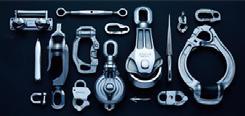
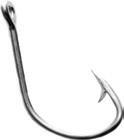
Specialized supplier of a wide range of material for longline fleet.

ASANO is a supplier and manufacturer of high-quality stainless steel fishing gears sales@asano-global.com

https://asano-global.com/
ALL STAINLESS STEEL PRODUCTS DESIGNED IN JAPAN
Specialized manufacturer & exporter of: Hi-tech 7 tuna purse seine nets, Super 20 aquaculture knotless nets (Raschel type), nylon longline & its spare parts, nylon fishing line, nylon mono & multi-mono nets, nylon twisted and braided nets, PE trawl nets, ropes, twines, floats and etc.

Rua da Cerfil (Cap. Gramaxo)
P.O. Box 1029, 4471-909 Maia PORTUGAL Tel: +351 22 961 9200
Fax: +351 22 960 5757
Email: sales@lankhorsteuronete.com www.euronete.com
Contact: Mafalda Gramaxo
Salvador Castro
Producer of the recognized brands:
Netting: Euroline®, Eurocross®, Premium®, Premium Plus, Lankoforce®

Wire Ropes: Eurowire® and Europact®

Fibre Ropes: Lankoforce®, Eurosteel®, Tipto® Super 12 net twines. Recently Launched!

SICOR INTERNATIONAL LIMITED
Gore Cross Business Park
Bridport Dorset DT6 3UX
Tel: 01308 428 224
Fax: 01308 428 228
Email: sales@sicor-int.com
Website: www.sicor-int.com
Contact: Toby Eeles
The Crosby Group is the world’s leading manufacturer of rigging, lifting, and material handling hardware. With a global network of more than 3,000 authorized distributors and unmatched local support, Crosby sets the standard for quality, training, and technical expertise in the eld.
www.thecrosbygroup.com
SICOR INTERNATIONAL LIMITED
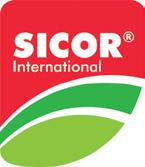
Unit 3
Murcar Trading Estate, Denmore Road, Bridge of Don
Aberdeen, Scotland, United Kingdom
Tel: 01224 707560
Fax: 01224 707561
Email: aberdeen@sicor-int.com
Contact: Gary Mitchell
Manufacturers of all types of fishing ropes, netting and twines including poly steel ropes and compact netting.


Founded in 1927, Sounete focuses its activity on the design and manufacture of hardware for trawling/ industrial fishing: steel and rubber bobbins, rubber spacers, trawl doors, blocks, swivels, large size thimbles, shackles, and other metal gear, including customized models SOUNETE INTERNACIONAL, S.A. Rua da Seara 588, 4430-291 Vila Nova de Gaia, PORTUGAL

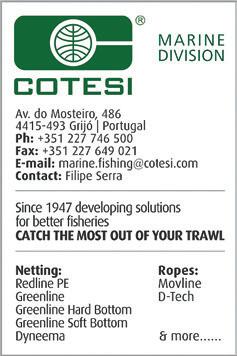
Sales: André Pinho Phone: +351 227 860 930 GSM: +351 917 207 052
Email: andre.pinho@sounete.pt www.sounete.pt
Fish Processing
VMK pelagic processing solutons combines high performance machines with small square meter usage and cost e.cient maintenance.
VMK solutions combines high performance small meter usage and cost efficient maintenance.
Fornandergatan 1, 392 33 Kalmar, SWEDEN +46 (0) 480 945 00 vmk@arenco.com
Fornandergatan 1, 392 33 Kalmar, SWEDEN +46 (0) 480 945 12 vmk@arenco.com www.vmkfish.com
Fish Processing
Machines - FPM - for smaller fish



SEAC FPM-400 Nobbing and Filleting machine now also with Automatic Feeder

SEAC AB
Industrigatan 8 386 32 ISLAND OF ÖLAND SWEDEN +4648535200 +46704391454 info@seac.se


For the latest news and analysis go to www.worldfishing.net JUNE 2023 | 35 PRODUCTS & SERVICES DIRECTORY
1952 & AQUACULTURE
advertise in the World Fishing Directory
Hannah Bolland on +44 1329 825335 www.worldfishing.net Fortune Net_Directory Nov 2021 copy.indd 1 09/11/2021 10:25 Bridon-Bekaert Ropes Group Tel: +44 (0) 1302 565108
for the fishing industry
WORLDFISHING SINCE
To
contact
Premium quality ropes
Poutada
Fishing
Gear
Euroline Tipto® / Eurostone® TRUSTED BY THOSE FEEDING THE WORLD!
Fish Processing
Supplying the fish and seafood industry for decades


Cabinplant’s solutions for the fish and seafood industry include solutions for reception of raw material, sorting, grading, cleaning, filleting, cooking, cooling, weighing and packing.
Fish Processing
Kroma A/S
RÆVEVEJ 22 - DK-7800 SKIVE
Phone: +45 9752 2099
Fax: +45 9752 0572
Web: www.kroma.dk


E-mail: kroma@kroma.dk

9000 • Gent • Belgium
Tel: +32 9 376 95 95
Fax: +32 9 376 95 96 info@cretel.com www.cretel.com
Cretel is manufacturing in Belgium
FISH SKINNERS

FISH SCALERS
VACUUM PACKAGING MACHINES
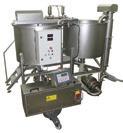



INDUSTRIAL WASHING AND DRYING EQUIPMENT


Consult us and take advantage of our worldwide experience and expertise.
Since 1958, FAIVRE Group designs, manufactures and commercializes high quality machines for the aquaculture industry.






Today, Faivre goes further and offers its know-how to the fishing industry! www.faivregroup.com

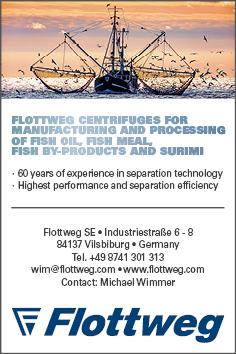
Kroma
A/S is a supplier of high quality de-scaling, gutting and filleting machines for all kind of fish species. Specialist in handling of roe, and filleting of soft fish species like mackerel.




TRAUST Knowhow
Trusted solutions for 40 years
Advanced raw material usage
LIMA are specialists in the manufacture of meat-bone separators, deboning and desinewing machines for poultry, pork, fish, lamb and beef industries. 70 different models are available from 100 to 20.000 kg/hr. (220 – 44.000 lbs/hr).




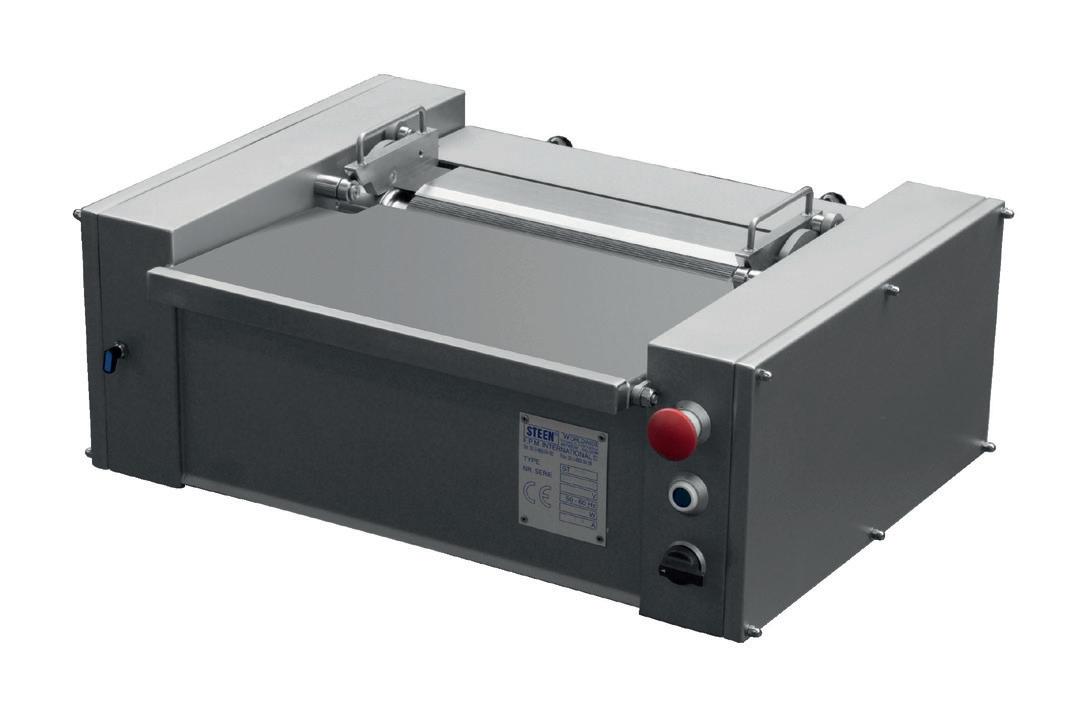

LIMA S.A.S.
456 Route de Rosporden
Z.I. du Guélen • 29000 QUIMPER

Tel. : 02 98 94 89 68 • Fax : 02 98 94 89 69
E-Mail : lima@lima-france.com www.lima-france.com
Injectors and Protein-Tec

MARELEC Food Technologies designs and manufactures hightech portioning, weighing, grading and control systems for the fishing and food industry.
Increases yield natural way
Low pressure injection
Adjustable injection levels
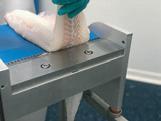
Packing yield increase
Increases yield natural way
Protein in Protein
Reduced drip
Lower cook and chill loss
No chemicals
www.marelec.com

Know-how in food processing ! Made
Sale: +354 516 3000 traust@traust.is www.traust.is
Ice & Refrigeration
IRAS A/S
Gammelby Mollevej 3
DK-6700 Esbjerg, Denmark
Tel: +45 7611 4949
Email: iras@iras.dkWeb: www.iras.dk
IRAS is supplying the modern fishing and aquaculture industry with innovative solutions within: Pumping, Classification, Weighing, Ice handling, Storage, Transport and Distribution systems. IRAS offers single products or complete systems for raw material handling.
Based on decades of experience, IRAS KNOW HOW to handle fish

36 | JUNE 2023 PRODUCTS & SERVICES DIRECTORY
in Germany
Optimar AS (+47) 70 10 80 00 optimar.no
Cretel Directory Dec 2020-Jan 2021.indd 1 27/11/2020 08:39
www.cabinplant.com
Ice & Refrigeration
Worldwide #1 in Ice Factories
Tel: +34 981 705722
Email: tucal@tucal.es www.tucal.es


Fishing nets, aquaculture nets, agriculture nets, sports nets, all types of ropes and twines.




Forever Industries Co., Ltd.

No.88, Di An Truong Tre St., Di An Town, Binh Duong, Vietnam
Tel: (+84) 916 225 068 (+84) 251 378 9125 sales@forevernetco.com www.forevernetco.com

Ropes & Net Coatings
Van Beelen
Ice Plants for Fish and Seafood
Flake Ice & Plate Ice up to 100t / 24h Ice Storage with Automatic Rake System Systems for Ice Conveying and Weighing Built in a Container or on a Frame www.kti-plersch.com | info@kti-plersch.com
Manufacturing plate freezers since 1989
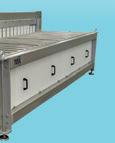

Fortune Net Group of Companies



No.42 Sto. Domingo Ave, Brgy. Matalahib, Quezon City, Metro Manila, Philippines
Tel: 0063287125362, 0063287119238
Fax: 006387125351, 0063287110169
Email: export_fntgrp@yahoo.com melmorales_728@yahoo.com alextanfortune@yahoo.com
Contact person: Mel Morales, Alex Tan
Braided knotted nets; Twisted knotted nets; Raschel knotless nets; Monofilament double knots net; PE Shade nets. All types of twines and ropes, Specializing in: Tuna & Sandrine Nets; Purse Seiners; Mono and Multi gill nets; Nylon & HDPE Trawl nets; Aquaculture Fence & Cage nets; Safety and Sports nets; Ornamental nets.
Purse Seine Nets
Catch all the fish all the time!
AS Fiskenett is the only company in Norway to design, manufacture, maintain and repair commercial fishing nets for both offshore and coastal fishing fleets.


Industrial Ice Making & Storage Systems
We have specialized in the development, construction, installation, service and maintenance of key components and technical solutions.
REAL-SNOW AS Filipstadveien 15, 0250 Oslo, NORWAY Phone: +47 9687 4080
E-mail: post@real-snow.com

Longlining & Jigging
BJ 5000Ex
Tucal_ID_Feb 2021.indd 1
BELITRONIC SWEDEN AB
Rattarevagen 7, S-872 63 Lunde, Sweden
Tel: +46 6123 2000 mailbox@belitronic.se www.belitronic.se
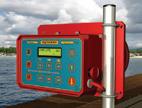

Top of the line Jig fishing machine – BJ 5000Ex. Friendly, Flexible and Intelligent! Reliable, effective and recently improved Jig Fishing Machine, special programs on request. The BJ 5000Ex can reach fishing depth fast!
Netting
Serious Fishing Gear for Serious Fisherman
Fishing Net, Rope, Float, Crab Trap, Long Line Fishing.
Tel:++86 631 5306208 Fax:++86 631 5306209
Cell/Whatsapp:++86 138 0631 1778
E-mail: ericdu@dnsnetting.com www.fishingnetchina.com
World’s leading supplier of Fishing nets (our globally trusted brands are SNG, Sapphire and Olivene), assembled trawls, Purse Seines, Aquaculture cages and anti-predator nets for aquaculture industry, ropes for the fishing, aquaculture and shipping industry. Our products are exported to over 60 countries globally.
Garware Technical Fibres
Plot No 11, Block D-1, MIDC, Chinchwad, Pune, India
Web: www.garwarefibres.com
Tel: (+91)2027990381
Contact: Vivek Kumar
Email: vkumar@garwarefibres.com
Mobile: +917767802806
KING CHOU MARINE TECHNOLOGY CO., LTD.



Ropes & Net
/ Salvador Castro
manufactures a full range of products for fishing applications: Steel Wire Ropes: Green Strand®, Super Yellow Fin®, Super Atlantic®, Zincal® Compact and several other constructions also with possibility of a plastic core impregnation. Combination Ropes: we produce combination ropes, both in 4 and 6 strands. Synthetic Ropes: Braided/Twisted and Double Braided ropes with recognized brands such as Astra Line®, Libra Line® and X Trema Line®
NET MANUFACTURERS
We are a professional fish net maker and provide assembly & design service for various nets. We use Nylon, HDPE, PP, PE to make purse seine net, fish farming cage net for smolt, grower, growout, predator & anti-bird, trawl net, trap net, safety net, sports net, twine, float and steel wire. The making of fish nets can be twisted, braided, super-knot knotless or raschell knotless, mono or multi-mono filaments.

Website: www.king-net.com.tw
Email: sales@mail.king-net.com.tw
Main phone No. +886 7 535 2939
Fax No. +886 7 535 2938 23F-2, No.2 Chung Shang 2nd Road Kaohsiung City, Taiwan , Zip code: #806
For the latest news and analysis go to www.worldfishing.net JUNE 2023 | 37 PRODUCTS & SERVICES DIRECTORY
D&S Fishing Directory Dec20-Jan21.indd 1 24/11/2020 16:15
11/01/2021 13:11
NETTING ROPES TWINES
Van Beelen Group bv +31(0)255 560 560 info@vanbeelengroup nl vanbeelengroup.nl P E vb-ropes.com D12 ropes and D3/D16 nets with Dyneema®. Enkalon® nylon netting and ropes with the highest strength in the industry High tenacity Supercatch polyester products and HDPE in Powerblue and Powergreen We make what works for you. IJmuiden, Netherlands
Contact Hugo Ulvatn,
to
Call: +47 48009504 Email: sales@fiskenett.no Info: www.fiskenett.no Netting WORLDFISHING SINCE 1952 & AQUACULTURE To advertise in the World Fishing Directory contact Hannah Bolland on +44 1329 825335 www.worldfishing.net Fortune Net_Directory Nov 2021 copy.indd 1 09/11/2021 10:25
MD,
learn how we can help you.
Coatings OLIVEIRA SÁ Rua do Outeiro, 906, 4470-150 Gemunde I Portugal Tel: +351 22 943 49 00 Fax: +351 22 943 49 49 Email: salvadorcastro@wireco.com Contact: Miguel Oliveira Sá
Ice & Refrigeration +44 (0)
400590 office@ptguk.com www.ptguk.com Marine and industrial refrigeration specialists
Oliveira SÁ
1779
Ropes & Net Coatings
REDES SALINAS S.A
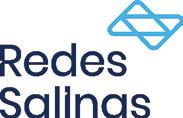
Carretera de Catral, 30 03360 Callosa de Segura, Alicante, Spain
Tel: 0034 965 310 408
Tel: 0034 965 310 354
Email: redessalinas@redessalinas.com www.redessalinas.com
Contact: Srta. Carmen Salinas
Manufacturer of special purse seining nets for tuna and horse mackerel, also trawl gear, ropes and twines
I-COATS N.V.
K. Mercierlei 29 • B-2600 Berchem • Belgium
Tel: +32 32 81 73 03 • Fax: +32 32 81 73 04 info@i-coats.be • www.i-coats.be

Contact: Koen Van Goethem
We offer environmentally friendly, waterbased coatings for ropes and nets made out of all types of synthetic fibers.
(ARAMIDS, HMPE, LCP , …) Tailor-made products developed to the needs of the market. Waxes, acrylics, polyurethanes, pigments and specialty coatings (LAGO 45, LAGO BF 10A, ICO-LUBE 10, ICO-THANE 10, ICO-THANE 32, ICO – THANE 96, ICO-THANE 98) All coatings are compatible, allowing development for individual solutions.






REACH PREREGISTERED
MARKUS LIFENET LTD

Breidvangur 30
IS-220 Hafnarfjordur, Iceland
Tel.Iceland: +354 5651375
Tel. UK: 01525 851234
Email: sales@markusnet.com
Contact: Petur Th. Petursson

We specialise in the development and manufacture of man overboard recovery systems suitable for all types of fishing vessels, such as the Markusnet and the Markus MOB Scramble-net/Cradle.

Ship Design
Trawl Doors
Trawl Makers osprey
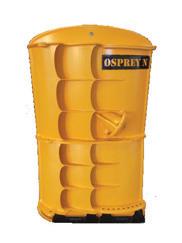
n
The Fuel Efficient Trawl Door
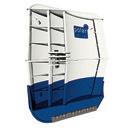
Trawl Makers
Tel: +33 (0) 2 99 56 14 36 trawldoor.morgere@morgere.fr www.morgere.com
Thyborøn & Poly-Ice Trawldoors for all kinds of pelagic, semi-pelagic and demersal trawling with single, twin- and multipurpose rigging. All doors are “Made in Denmark” according to customer demands and wishes.

8, Sydhalevej, DK-7680 Thyborøn, Denmark mail@thyboron-trawldoor.dk www.trawldoor.dk
Estrada de Fortons 23 36812 Redondela (Pontevedra) Spain
Tel: +34 986 20 33 12
E-mail: info@grupoeurored.com

Website: www.grupoeurored.com
Hi tech design and production of pelagic and bottom fishing trawl systems. Nets and deck material for tuna purse seiners, inshore fishing and longliners. Everything necessary for fishing activities:
MORGERE trawl doors, COTESI nets, ropes, mooring, BRIDON cable, flotation, CROSBY GROUP naval hardware, longline material, etc. Aquaculture integral supplies and installation of fish farming and Long Line production systems, OFFSHORE facilities.
Eurored Directory.indd 1 30/09/2020 14:32 -we make fishing more profitable







VÓNIN LTD


AKVASERVIS TRAWLS
Email: office@akvaservis.lt www.akvaservis-trawl.com

Tel: +370 46 365 363
Las Palmas - Baltic - Murmansk
Designer & manufacturer of Pelagic, Semi-Pelagic & Bottom trawls since 1992 with active trawls in North Atlantic, Far-Eastern & Western-African fisheries. COMPETITIVE



P.O. Box 19
P.O. Box 19 FO-530 Fuglafjørõur Faroe Islands
FO-530 Fuglafjørður Faroe Islands
Tel: +298 474 200
Tel: +298 474 200
Fax: +298 474 201
Fax: +298 474 201
Email: info@vonin.com
E-mail: info@vonin.com
Web: www.vonin.com
Web: www.vonin.com
Contact: Bogi Non
Contact: Eystein Elttør
Vónin is a major supplier to the fishing fleet and aquaculture industry with branches in the Faroe Islands, Greenland, Canada, Denmark and Norway. Vónin manufactures pelagic trawls, semi pelagic trawl, shrimp trawls, bottom trawls, sorting grids, crab pots, net cages, mooring systems and net washing systems.
Manufacturer of pelagic trawls, semi-pelagic trawls, shrimp trawls, various bottom trawls, purse seine nets, fish farming nets and sorting grids. Vónin is a major supplier to the North Atlantic/Arctic fishing fleet. We have all accessories in stock.
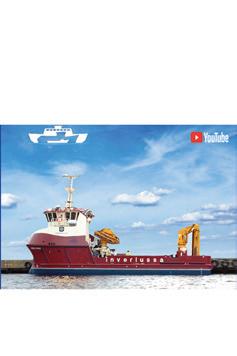
38 | JUNE 2023 For the latest news and analysis go to www.worldfishing.net WORLDFISHING SINCE 1952 & AQUACULTURE To advertise in the World Fishing Directory contact Hannah Bolland on +44 1329 825335 www.worldfishing.net Fortune Net_Directory Nov 2021 copy.indd 1 09/11/2021 10:25 PEGUET & Cie 12 Rue Des Buchillons 74105 Annemasse, France Tel: +33 450 95 54 54 Fax: +33 450 92 22 06 E-mail: info@peguet.fr Website: www.peguet.fr Manufacture of Maillon Rapide® quick links for permanent connection in aeronautics, architecture, rigging equipment, industrial supplies, sailing, parachuting & paragliding, professional fishing, tramways facilities, climbing. All product range self-certified. YOUR PARTNER SINCE1941 G HETLAND SERVICE POINT FOR THE NORTH SEA Centrally located in the North Sea basin Available 24/7 SHIPYARD SERVICES FISHING GEAR TECHNICAL EQUIPMENT & SERVICES DESIGN & ENGINEERING GENERAL SUPPLIES PORT & FISH LANDING FACILITIES Complete range of high efficient trawl doors for demersal fishing, “off the seabed” semi-pelagic fishing and pelagic fishing.
atlimarj@polardoors.com www.polardoors.com Ship Yards Steel Wire Ropes & Trawl Wire
Reykjavík, Iceland
PRICES WITHOUT COMPROMISE IN QUALITY Safety
WHAT IS BELOW SURFACE MUST BE ABOVE STANDARD.
GREEN PIN® AQUACULTURE RANGE
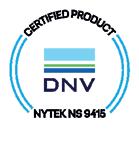
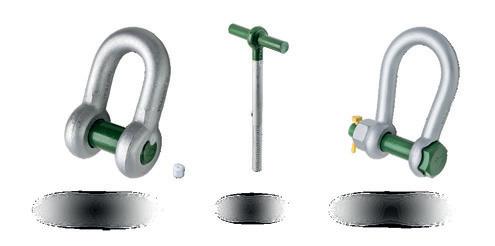

When you invest time to grow your fish, you want your cage farming system to stay secure. Even under extreme marine conditions. Your underwater cages and mooring system need shackles, chain and other mooring accessories that are below surface, but above standard. That is why the Green Pin® aquaculture range is the top choice for fish-farmers. Find our full range on greenpin.com/aquaculture

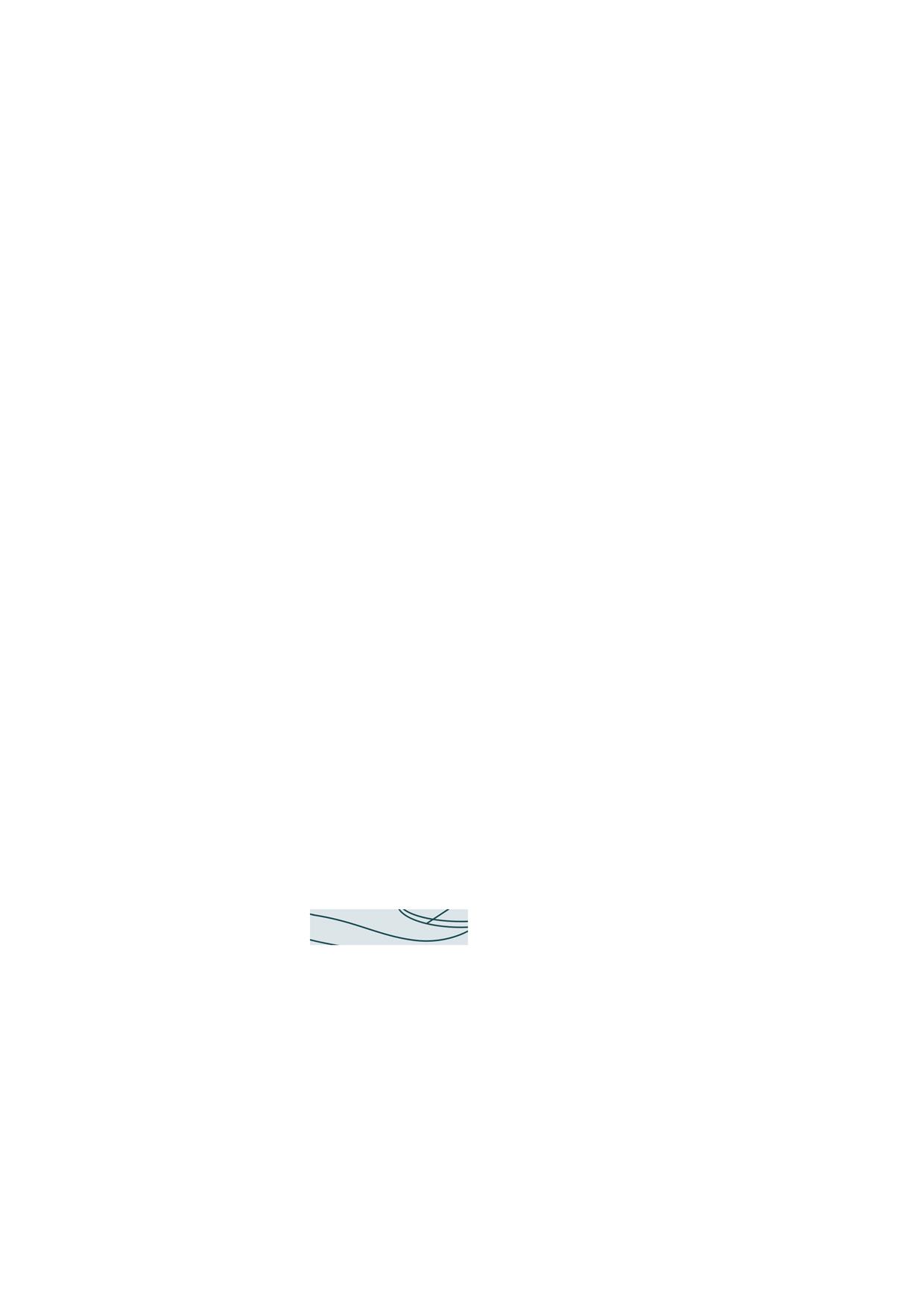

















 Markus Lifenet ehf
MOB Boat Rescue-net
Markus Lifenet ehf., Hvaleyrarbraut 27, 220 Hafnarfirði Tel:
Markus Lifenet ehf
MOB Boat Rescue-net
Markus Lifenet ehf., Hvaleyrarbraut 27, 220 Hafnarfirði Tel:










































































































































































